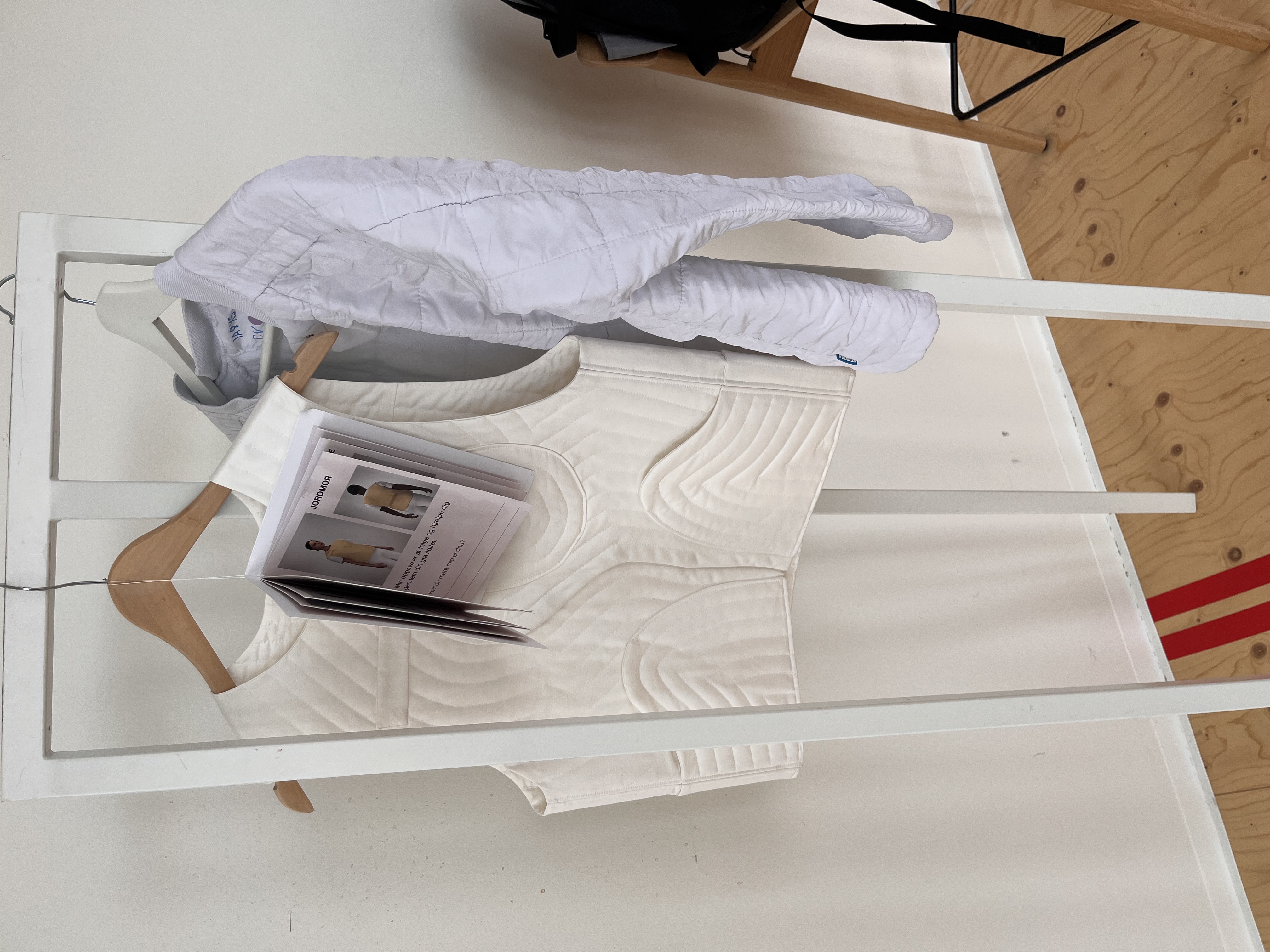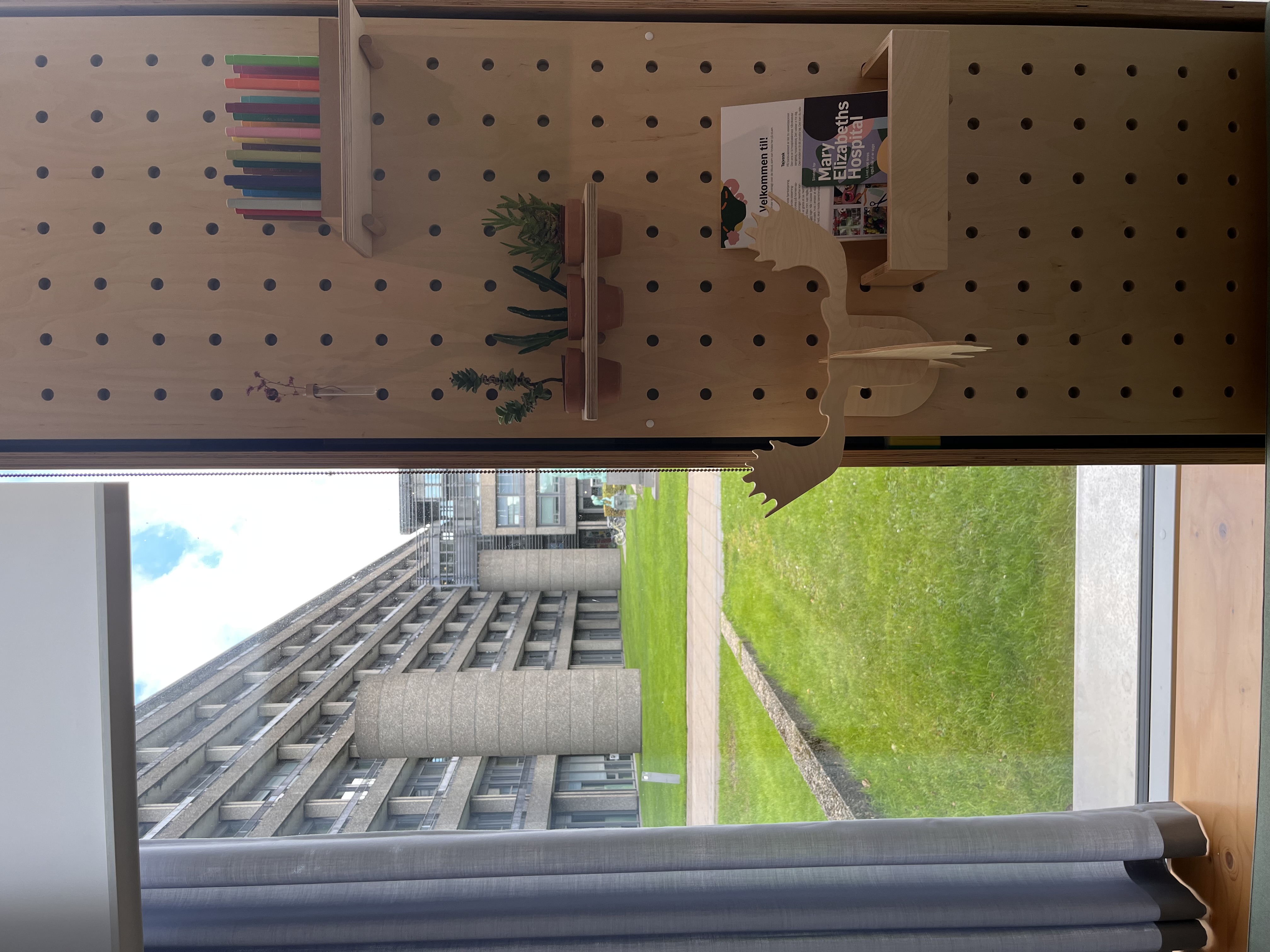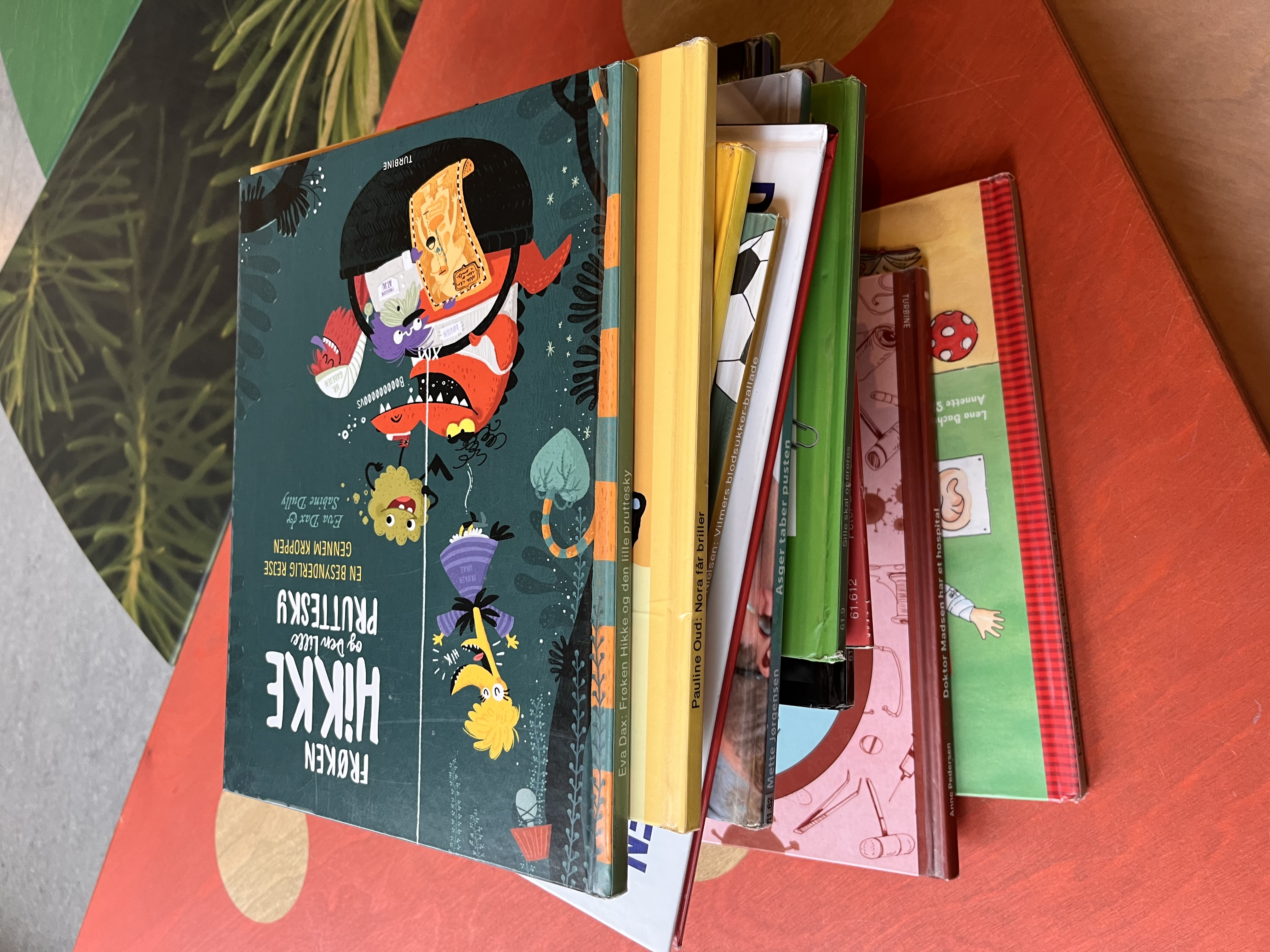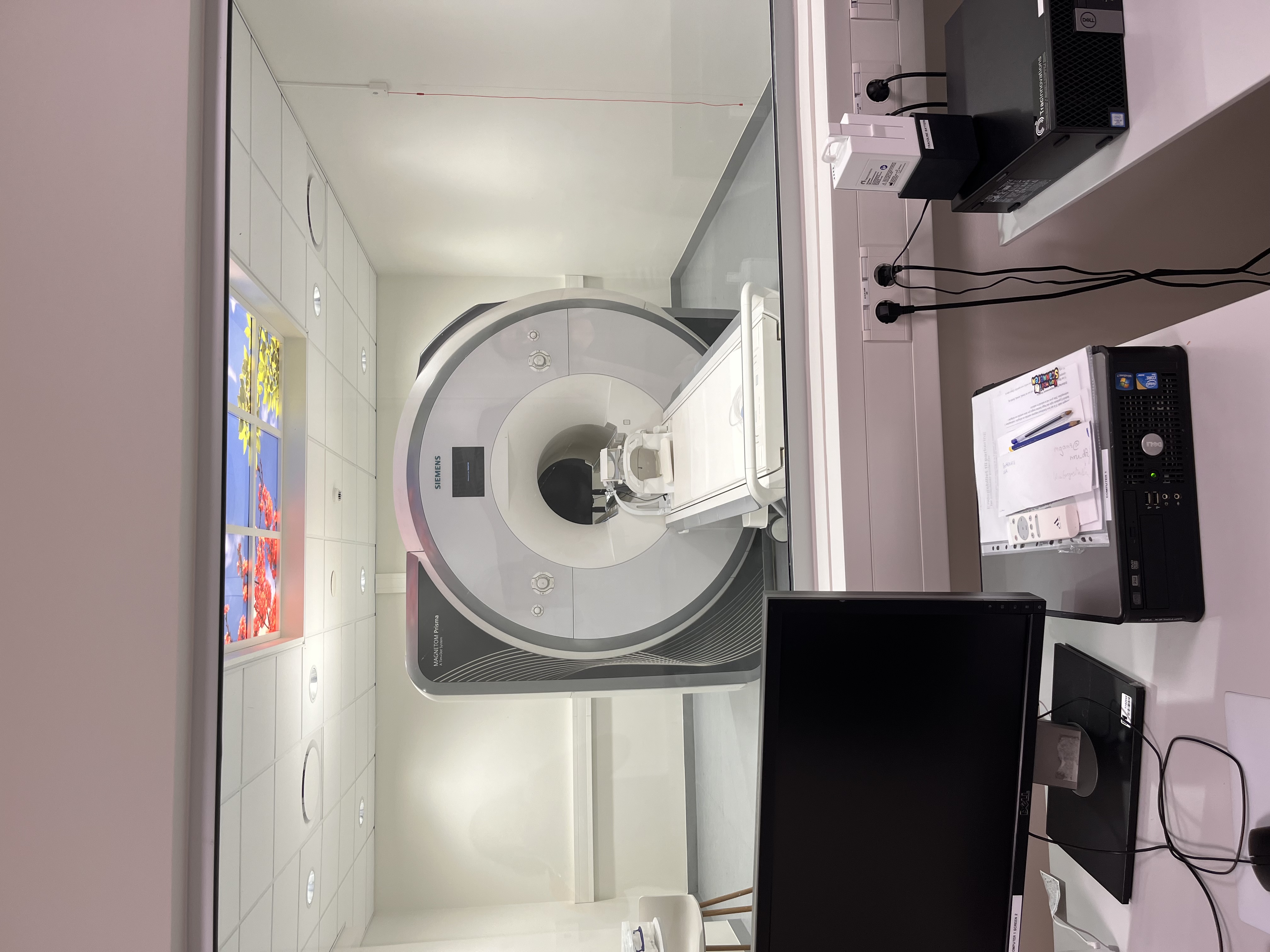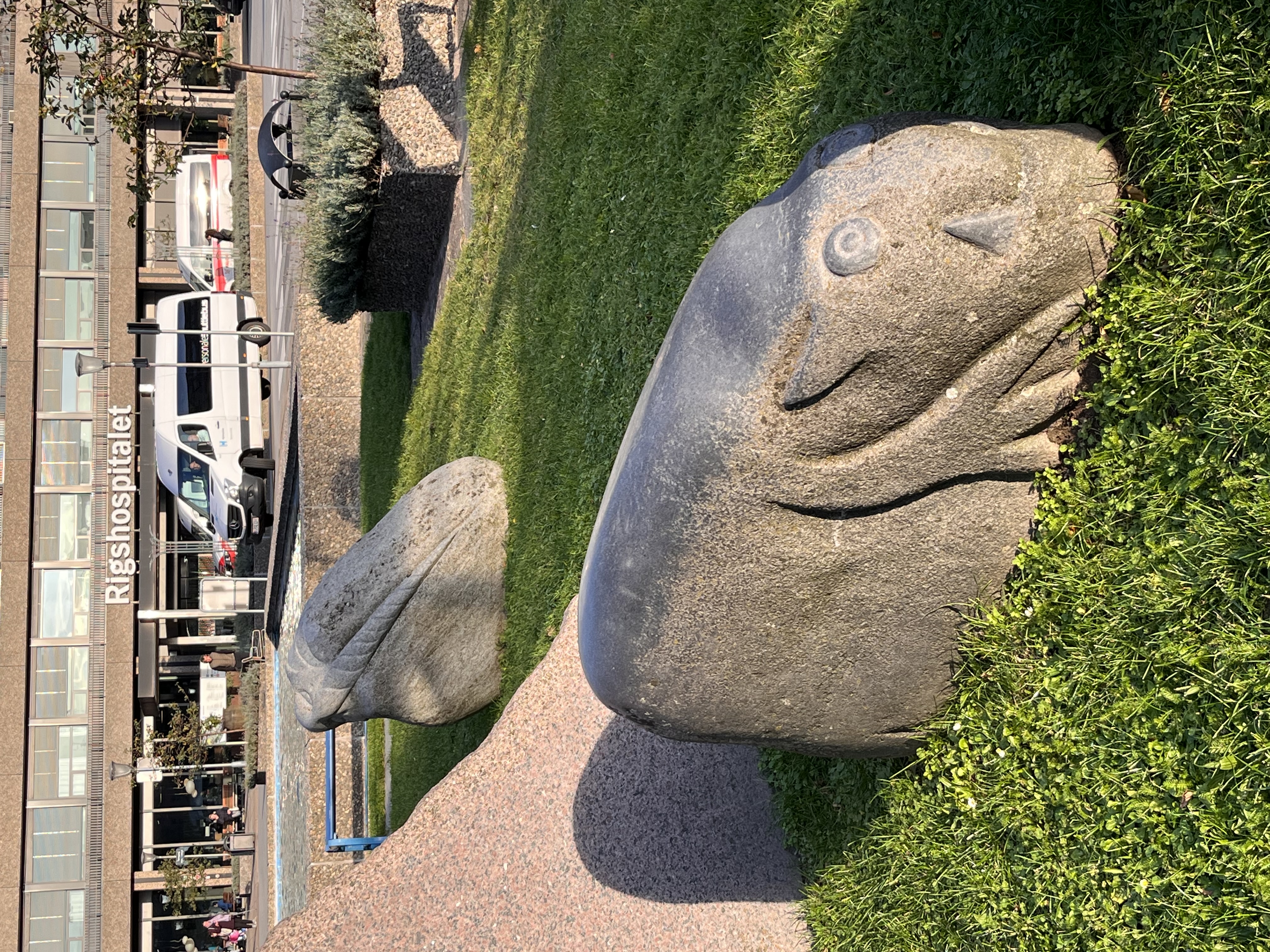Playful Communication Design
Funded by the University of Sheffield with Jill Thompson, Sean Thompson (Dubit) and Nikki Stearman (XPloro)
Jan 2023-Dec 2023
The aim of this follow-on funding was to explore how playful communication could be used for on and off-boarding the MRI playkit developed previously. For example, how do we get children to take up the playkit, how does it fit into other aspects of their lives, what happens after they have used it and had the MRI scan? The intention was to explore this in three stages: (1) packaging design, (2) an international knowledge exchange trip to the play design team at Mary Elizabeth’s Hospital in Copenhagen, and (3) user testing with child-patients.
Packaging Design
One of the barriers to MedTech interventions in the UK is that often mail from hospitals to patients goes unopened. Thus, there is an issue of how to ensure children gain access to the Playkit. We had ideas of creating a packaging design that when sent to patients would be intriguing and thus opened and used. Simultaneously, our initial conversations with Casper Reitz Mathisen, a Lead Designer at the Mary Elizabeth Hospital Copenhagen, a new children’s hospital set to open in 2026 and be embed with play principles, showed how his team were planning to use play not only for it’s own cause but also as a form of communication design that could make processes relating to medical procedures accessible to children and families.
Part of this included the exploration of a stencil system to both unify the visual identity of the hospital but also through its simplicity allow it to be used by patients. For example, in the images below it is possible to see how the stencil prototype shapes are drawn from parts of the body, but can also be used to symbolise almost endless possibilities for creating images. To illustrate this further the two images on the right show how the stencils have been used to produce a poster and series of flash cards.



In this way, the designers thought that seeing the shapes in different forms of hospital communication could provide patients with both familiarity across their health journey but also allow child-patients to co-opt it for their own purposes too. Thus, giving them greater agency in a medical system that is traditionally founded on a top-down communication structure.
We began to explore how the Playkit packaging could also be a form of playful communication design. Funding for the packaging design was awarded to the company Design Futures. We began with a visit to their office and an exploration of packaging in general. The Design Futures team began by thinking about how their past designs for other projects could be adapted. For example, how the tool bag and doll’s house in the images below could become either a doctor’s bag or a hospital. However, we had concerns that roll-top doctor’s bags are no longer in common use, and also that hospitals come in many shapes and sizes.


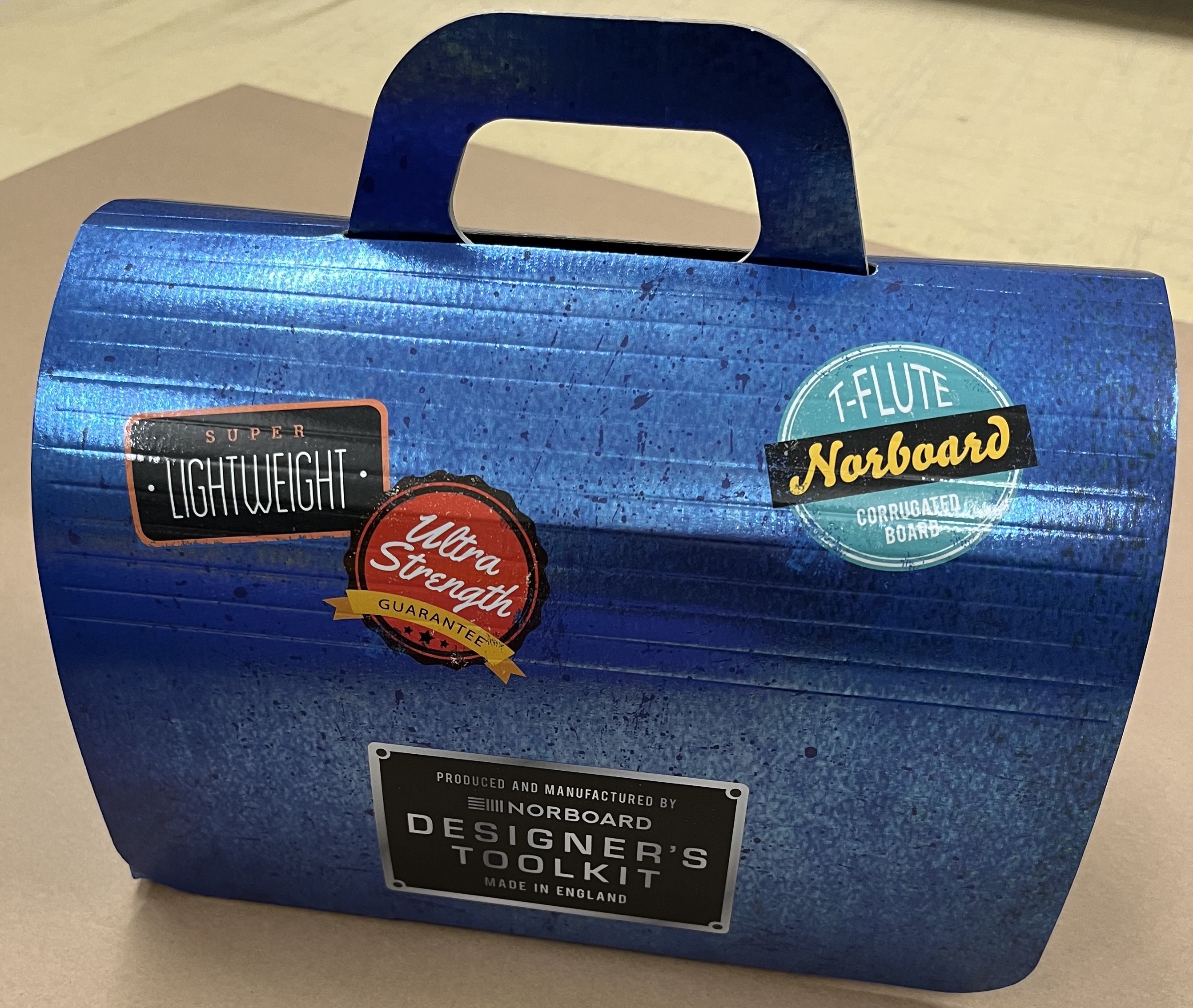
Taking these concerns on board the packaging designers produced a backpack that could be used to signify the journey the child goes on from hospital to home and back again. The main body of the backpack was designed to hold the pieces for constructing the cardboard MRI scanner, as well as the cardboard VR headset. The front pocket provided space a for stickers that children can use to decorate the scanner.

Knowledge Exchange Trip
At the end of the original research and development project that produced the Playkit we were fortunate to connect with the play design team at Mary Elizabeth’s Hospital and academics at the University of Copenhagen who are working closely with them in areas connected to child health. The hospital is due to open in 2026 and the design team are exploring ways in which play can influence each stage of the hospital experience, with the aim of impacting positively on patient health and wellbeing beyond what traditional hospitals can do.
Out initial discussions with the Copenhagen team in 2022 highlighted similarities in our work. For example LEGO who are part sponsors of the new hospital had also just developed a LEGO MRI scanner to help children prepare.
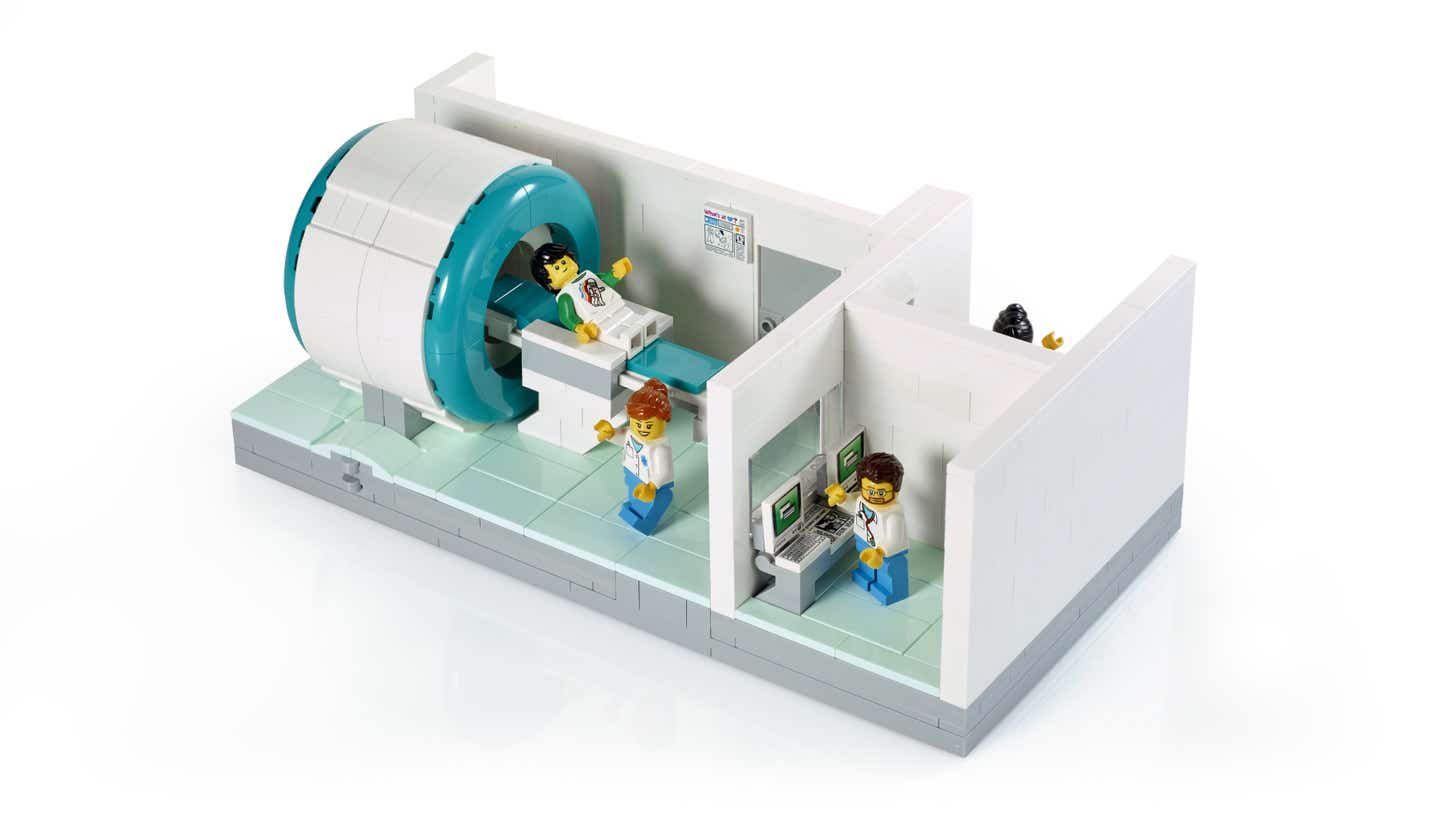 Image: Toy MRI Scanner by LEGO
Image: Toy MRI Scanner by LEGOHowever, unlike our Playkit the LEGO kit is too expensive to be given to children to use at home so have instead opted to send 600 sets to hospitals. The LEGOI design is of course beautiful but we felt that it did not serve the same intention as our Playkit because during our initial research we found that one of the barriers to having toy scanners, such as the Kitten Scanner, in hospitals is that they need staff to aid patient use meaning that most children needing an MRI scan never get to use one.
During the knowledge exchange trip to Copenhagen in 2023, we learned how the design team at Mary Elizabeth’s had almost entirely given up on play interventions for specific medical procedures believing instead that the bigger issue of how to make patterns of playful communication between staff and patients, staff and staff, staff and parents etc was needed first. The remainder of this blog post shares some of my thoughts from my time in Copenhagen.
Repetition, Familiarity & Collecting
One of the hospital’s radiographers gave us a tour of the MRI department in the original hospital. She showed us how the design team for the new hospital were already making changes that were benefiting them. Firstly, the team had produced a series of magnetic tiles that could be used to explain the patient’s journey to them:
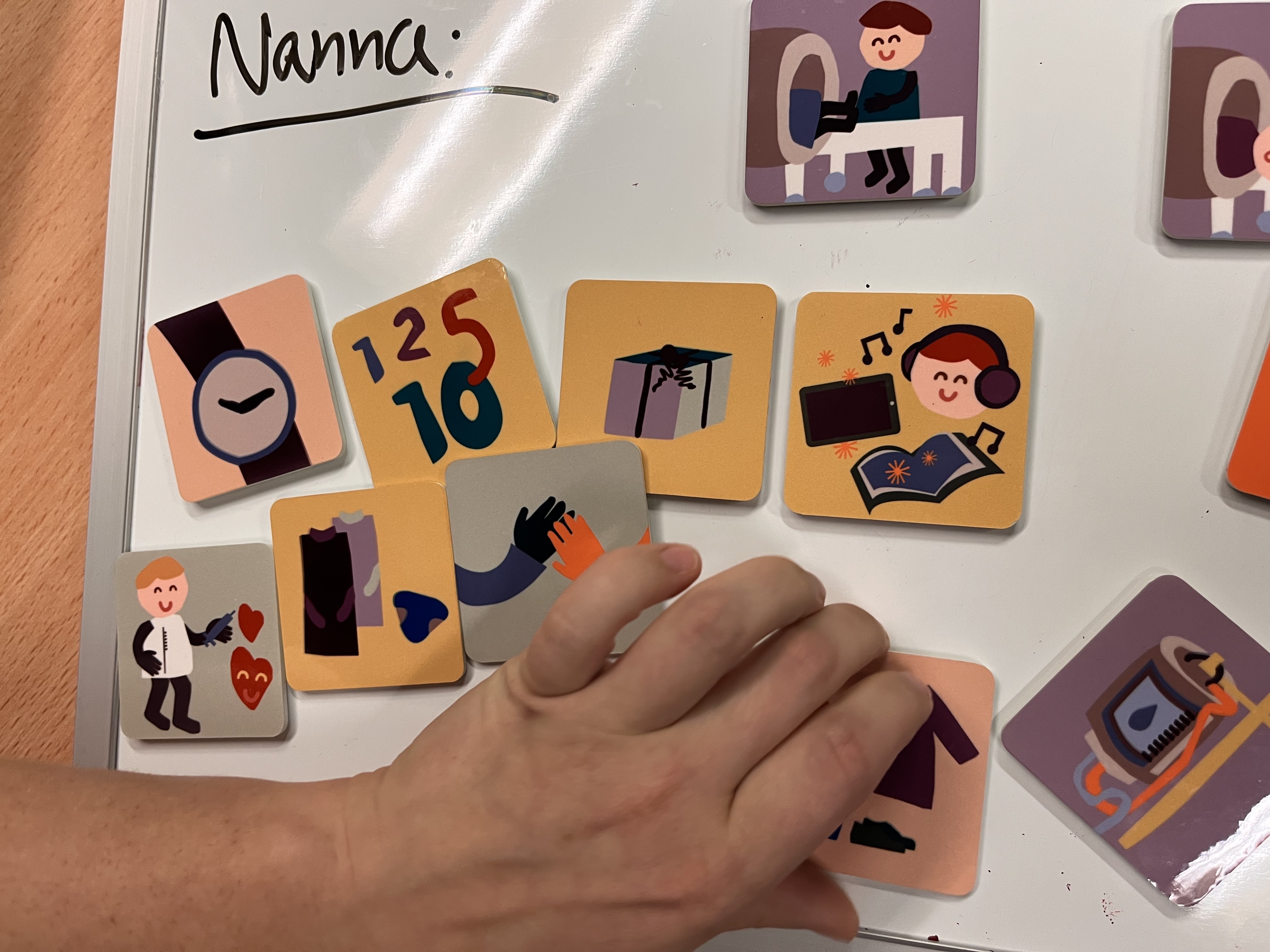 Image: Magnetic Tiles used to explain the patient journey
Image: Magnetic Tiles used to explain the patient journeyThe tile sequence can be altered by the patient to give them greater agency, i.e. adding in an extra trip to the bathroom or asking for a high five on completing the medical procedure.
Another example is how the team had taken the bigger Lego MRI Scanner and made a smaller version that could be given to child patients to take home. This followed ideas similar to our Playkit, in that by allowing children the opportunity to own it they could familiarise themselves with an MRI scan at their own pace and in their homes. I imagined children combining this kit with other toys of pieces of LEGO in wider play which was a finding from research with our Playkit.
Further, as the radiographer showed us the kit I noticed that the graphics contained a Polar bear, which I had also seen in other parts of the hospital. It transpired that children receive a bear after each trip to the hospital, and that some children collected these like trophies.
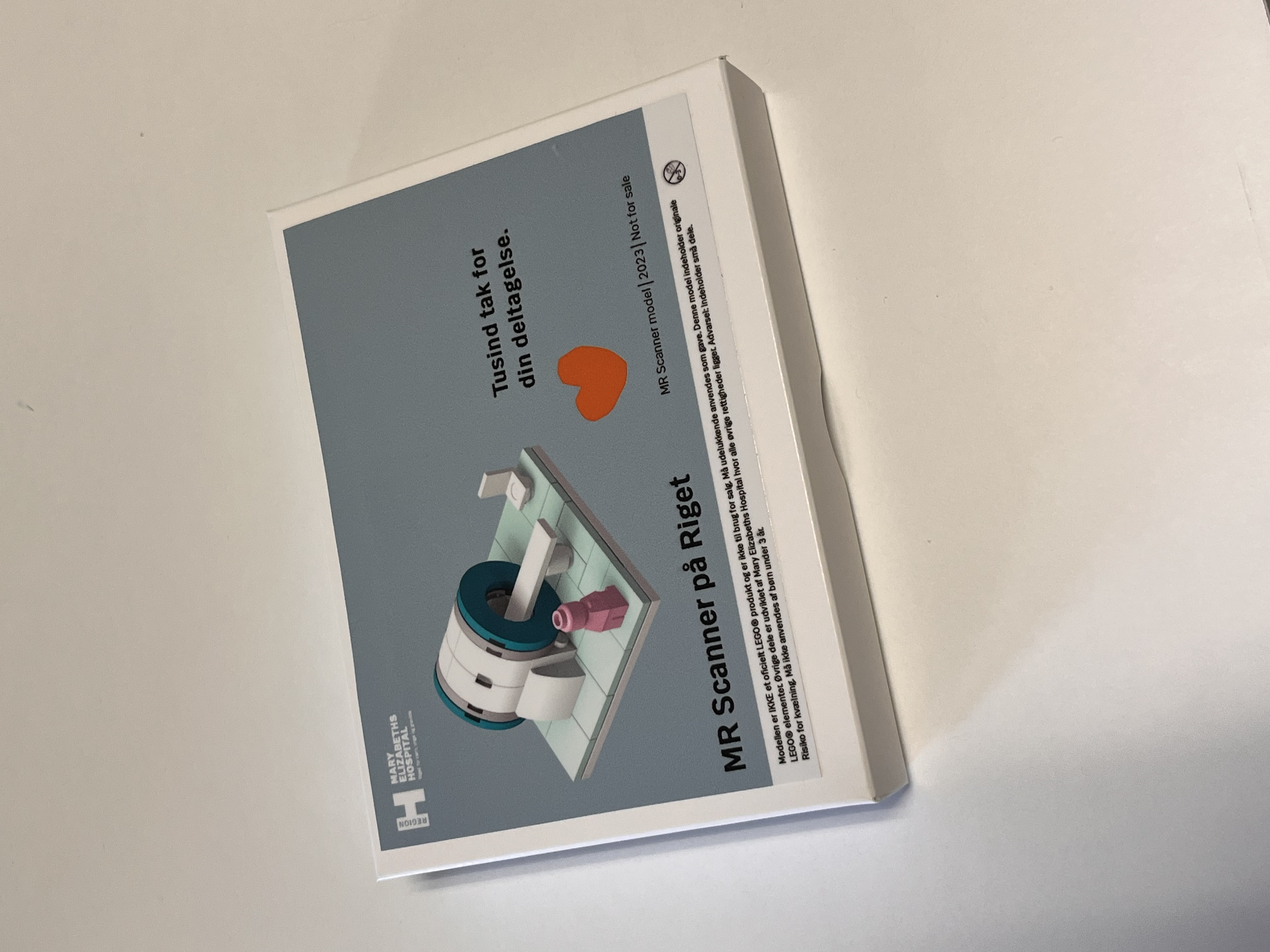

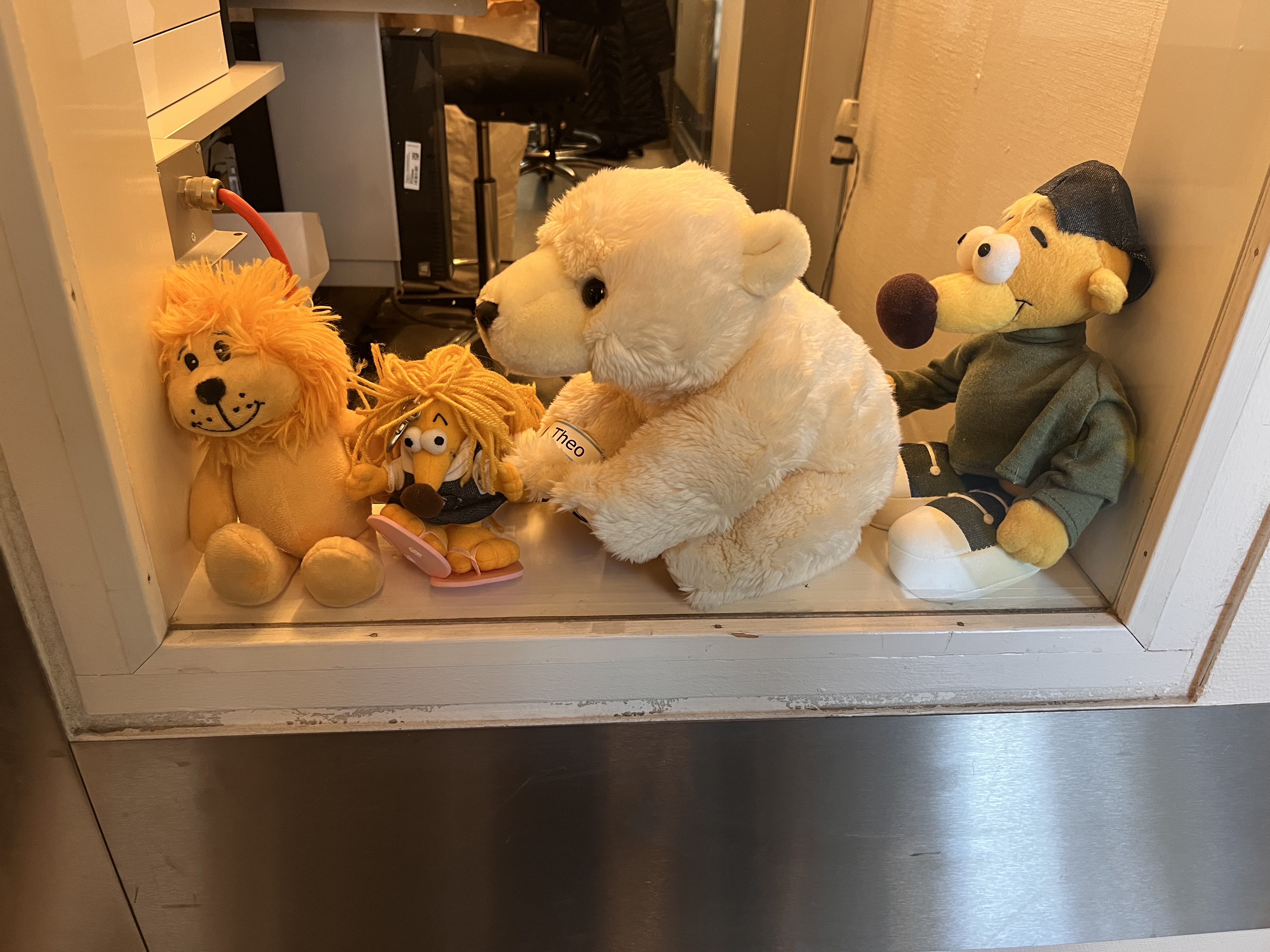
The radiographer also told us about the Beads of Courage project where children collect beads after a medical procedure, with each one having its own design, i.e. a bead for a blood test is distinguishable from one for an MRI scan. The beads can be threaded together as an ode to their hospital treatment, as the company that makes them suggests a recognition of their bravery. This got me thinking about work I had done previously about children’s innate desire to collect and curate materials. A lovely example of this is in Rautio’s (2013) paper ‘Children who carry Stones in their pockets’. I also wondered if the beads project wouldvisually signal to other children that they were also going through hospital treatment without the need to speak to one other; they would simply see someone else with a bead necklace and know they were not the only child experiencing hospital procedures. Thus, could it be that the backpack design for our Playkit might also signal to other children with MRI Playkit backpacks that they were not alone? Perhaps we could also extend on some of this learning so that children get a memento of having the scan to add to their backpack, a badge like from scouting or simply new stickers? An idea that could be explored further.
Playful Architecture
It is hard not to consider the importance of hospital architecture when you are surrounded by the old hospital next to the new one being built:
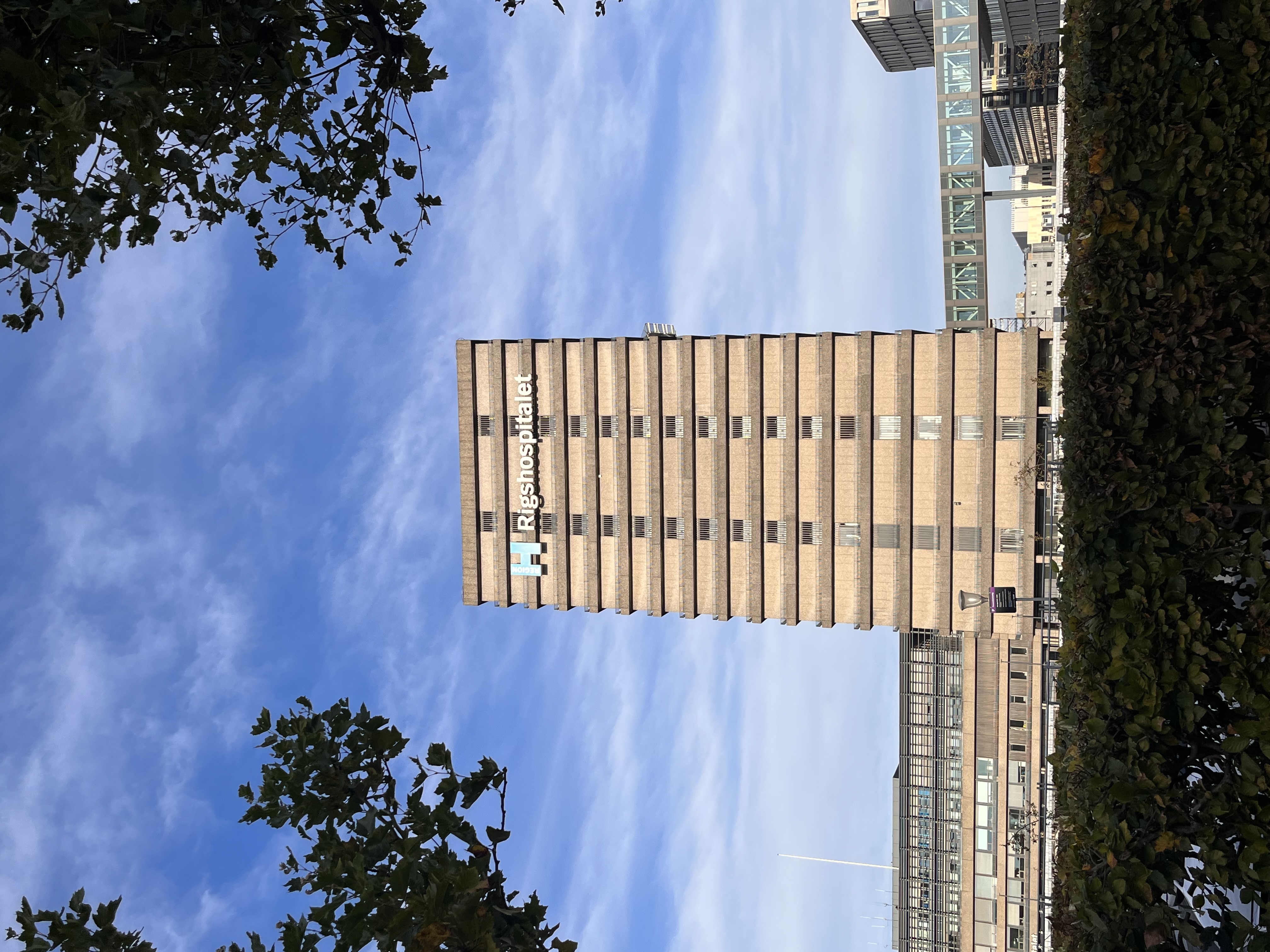
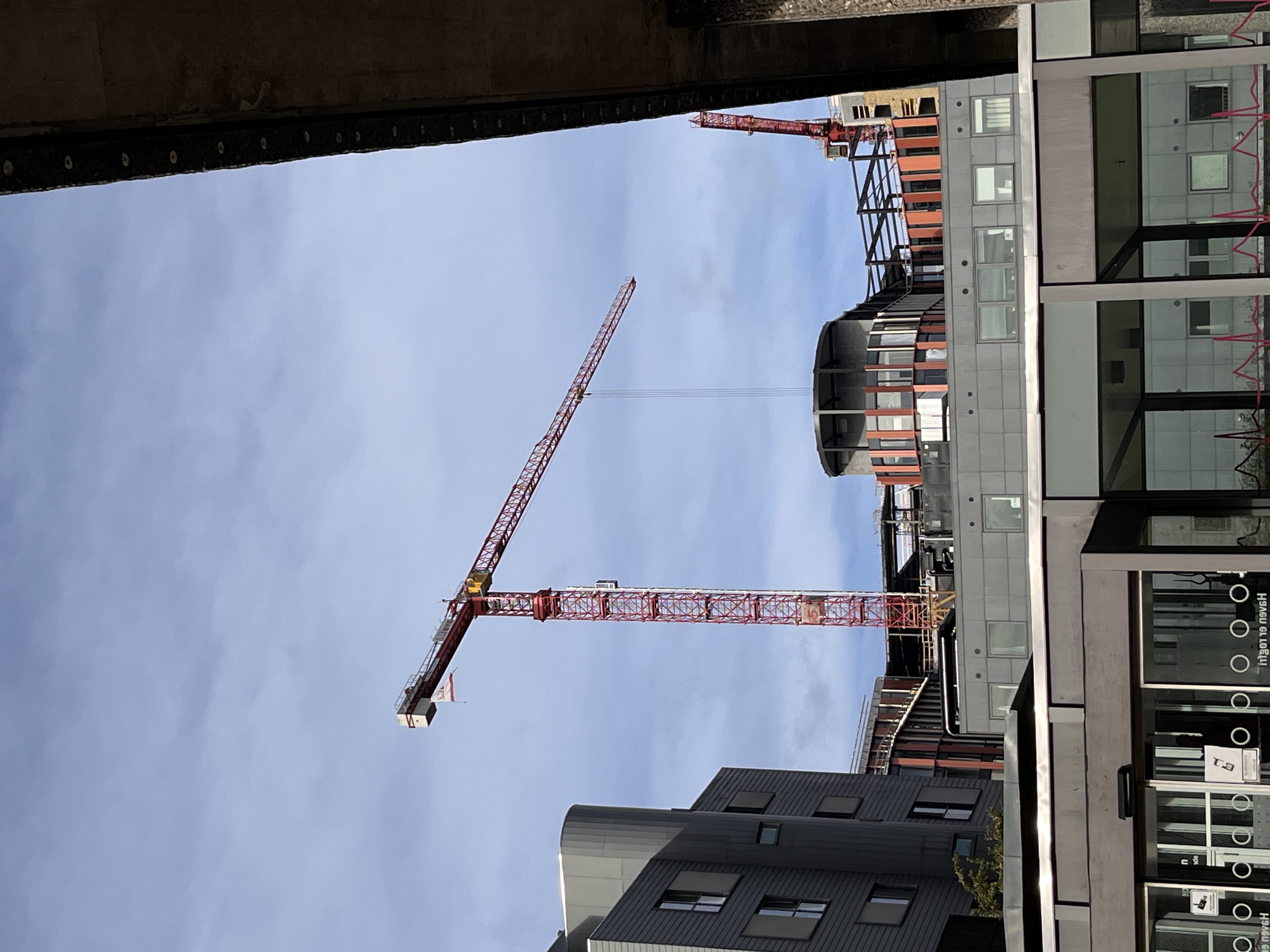
The design of the new building has a construction that looks like a central hub with spokes moving off it. The design team referred to the spokes as “fingers” with the intentions that each fingertip should contain a communal space for a different type of play, meeting point or relaxation.
 Image: Model of the design for the new Mary Elizabeth Hospital
Image: Model of the design for the new Mary Elizabeth HospitalBut hospitals come with many unique design constraints. For example, how can you make a space that has open plant life when nature contains bacteria and moisture that could be detrimental to medical equipment etc. The design team have a test house that is the same proportions as one “finger” of the new building to try out their ideas:
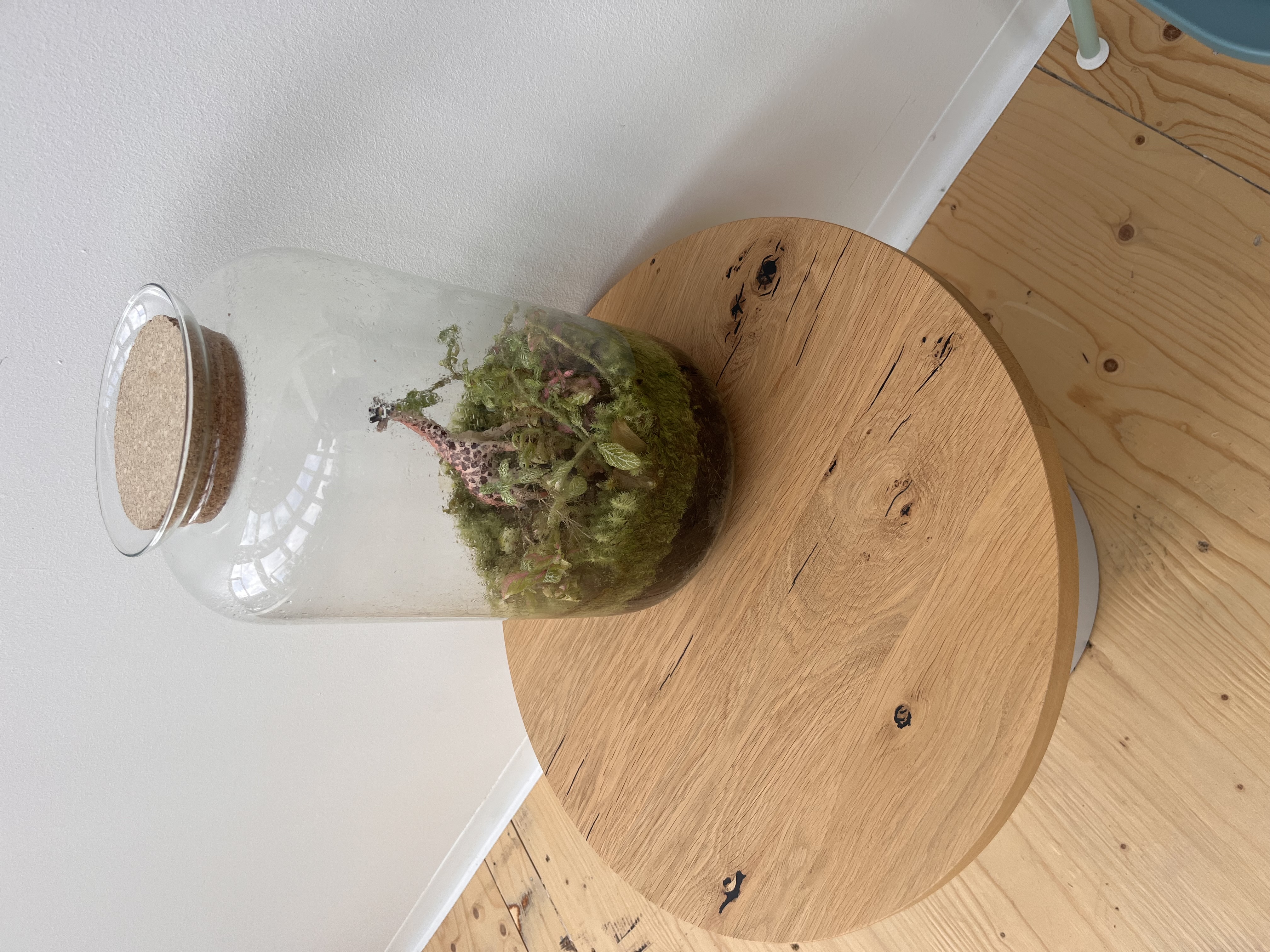
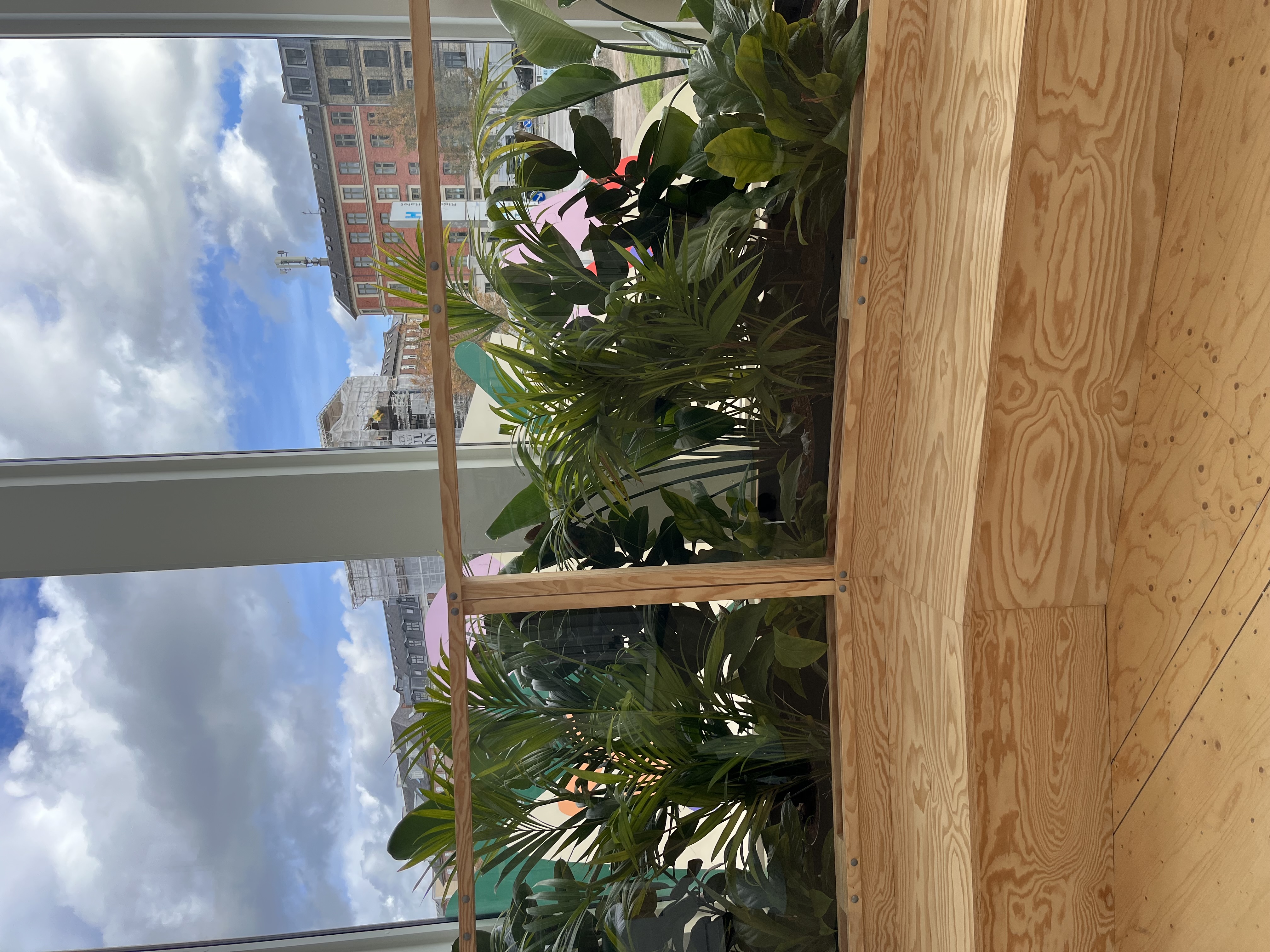
Within the hospital space the design team were also experimenting with how to make subtle invitations to play. Because patients are not always in the mood for play or well enough, they need these to be small suggestions rather than overtly playful. For example, the image below shows their exploration of play equipment that could be pulled out from inside the structure of more functional furniture or a coat rack that can also be climbed.
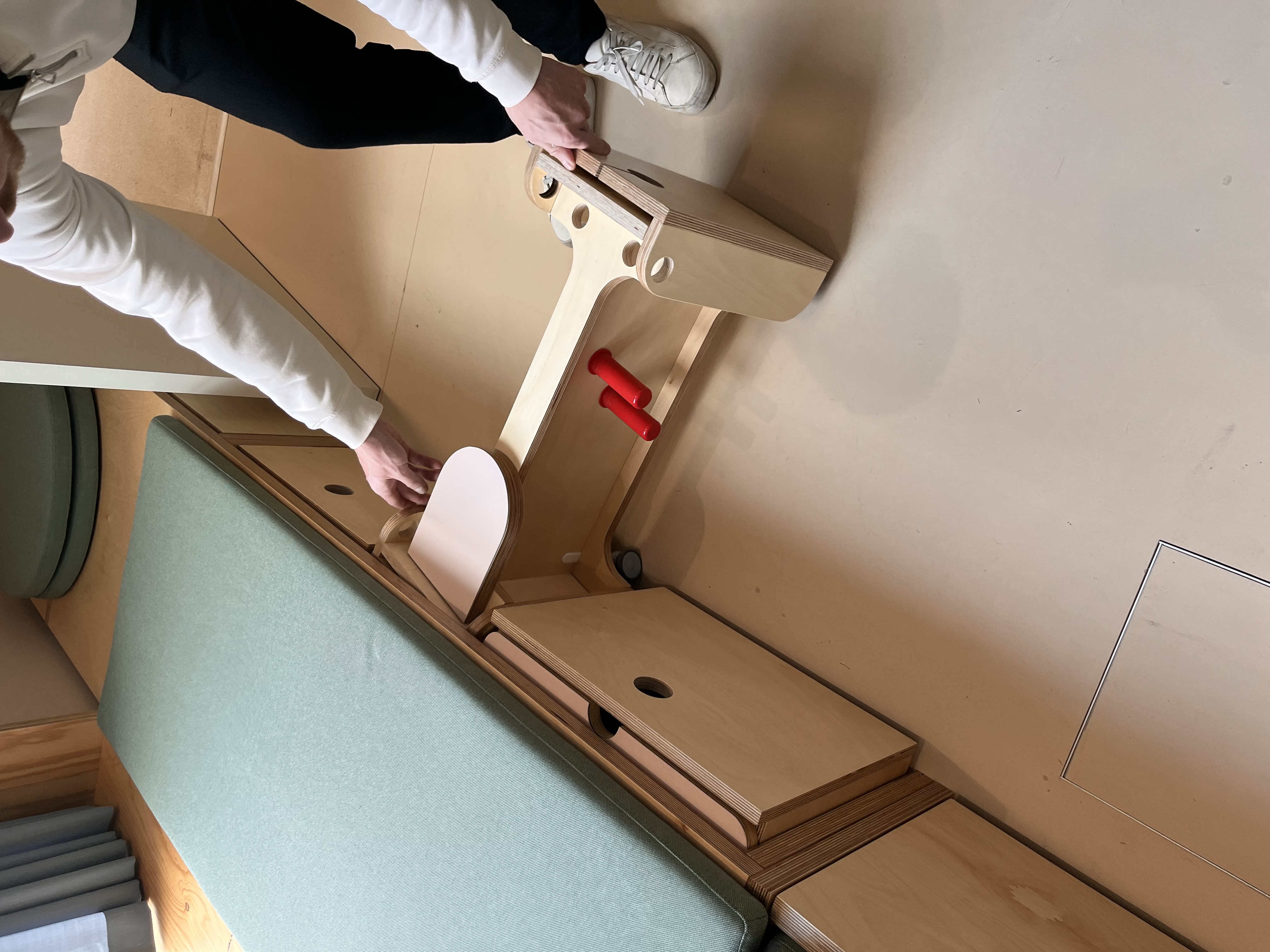
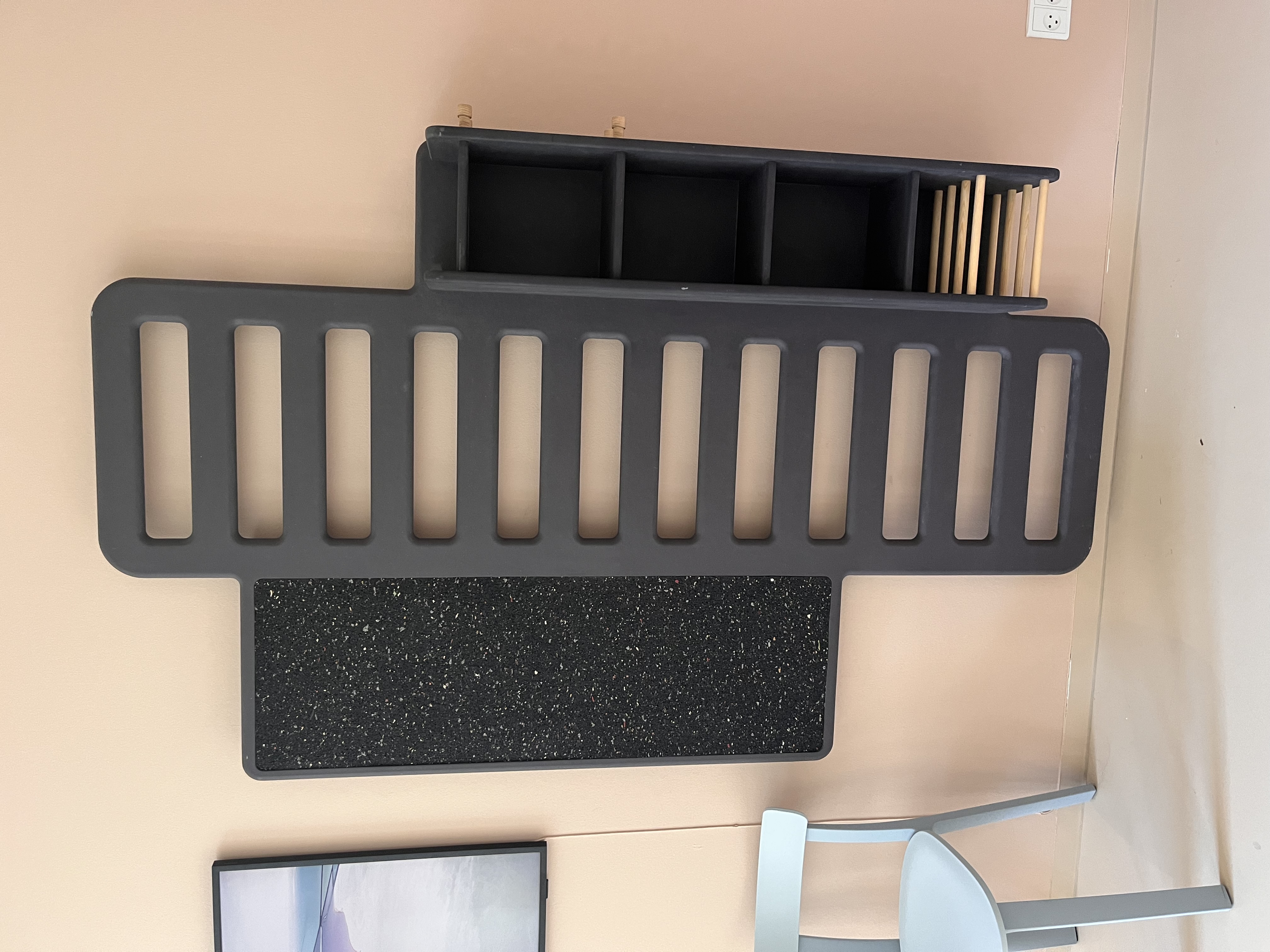
Images: Tests with playable hospital furniture
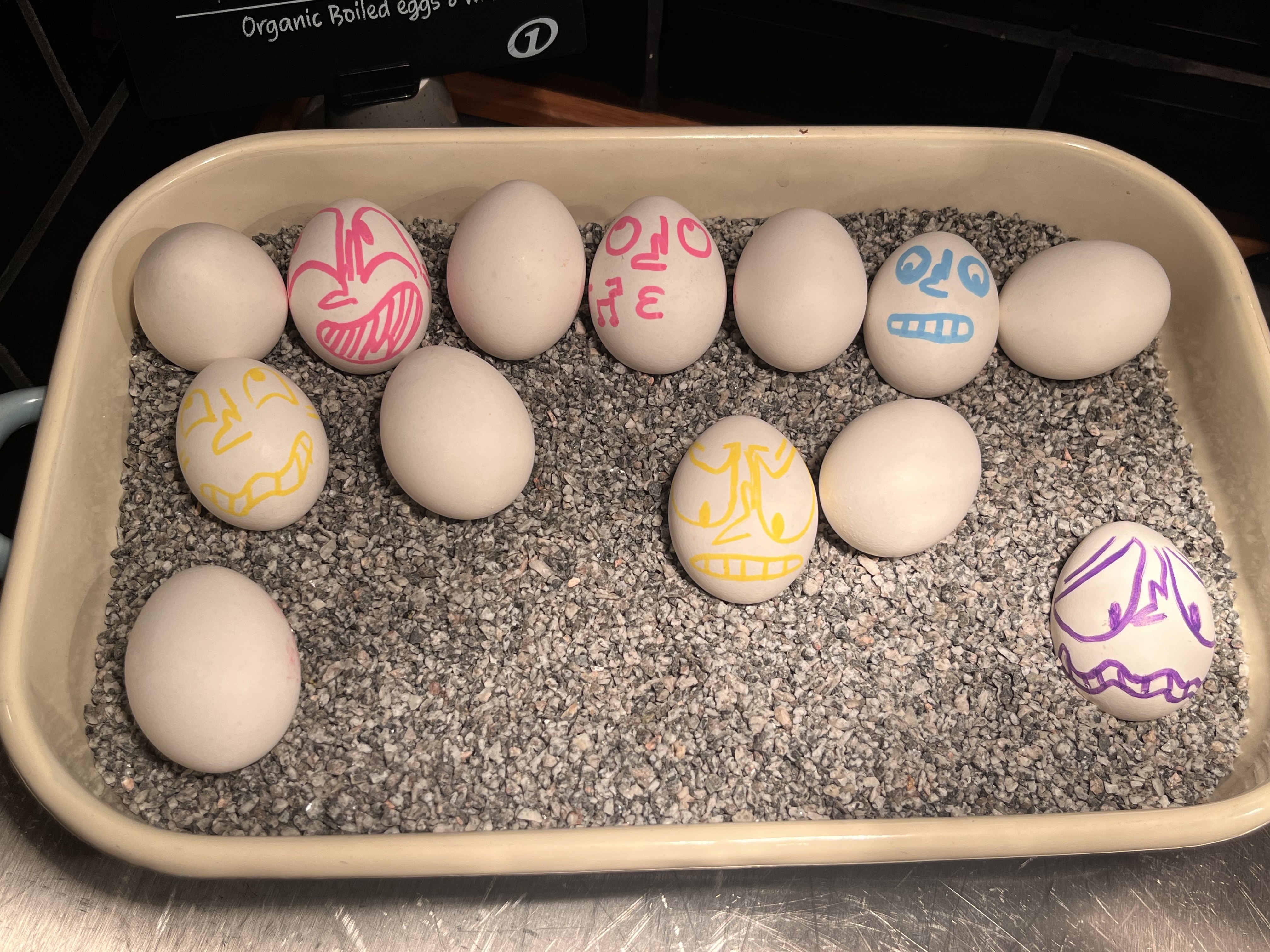 Image: Painted eggs at the hotel buffet
Image: Painted eggs at the hotel buffetPlay & Communication
Play is children’s preferred means of communicating and I believe can be seen as a form of communication practice. We also heard from the Copenhagen team how hospital spaces afford three different possibilities for play (1) children playing alone or with other children, (2) children and Staff and (3) staff and staff:

As we moved around Copenhagen thinking about play, I thought about how it can be used for different purposes. For example, the Traffic Playground allows children to become “familiar” with everyday processes such as rules and signs by replicating the real world to child proportions; an obvious representation of the adult world.
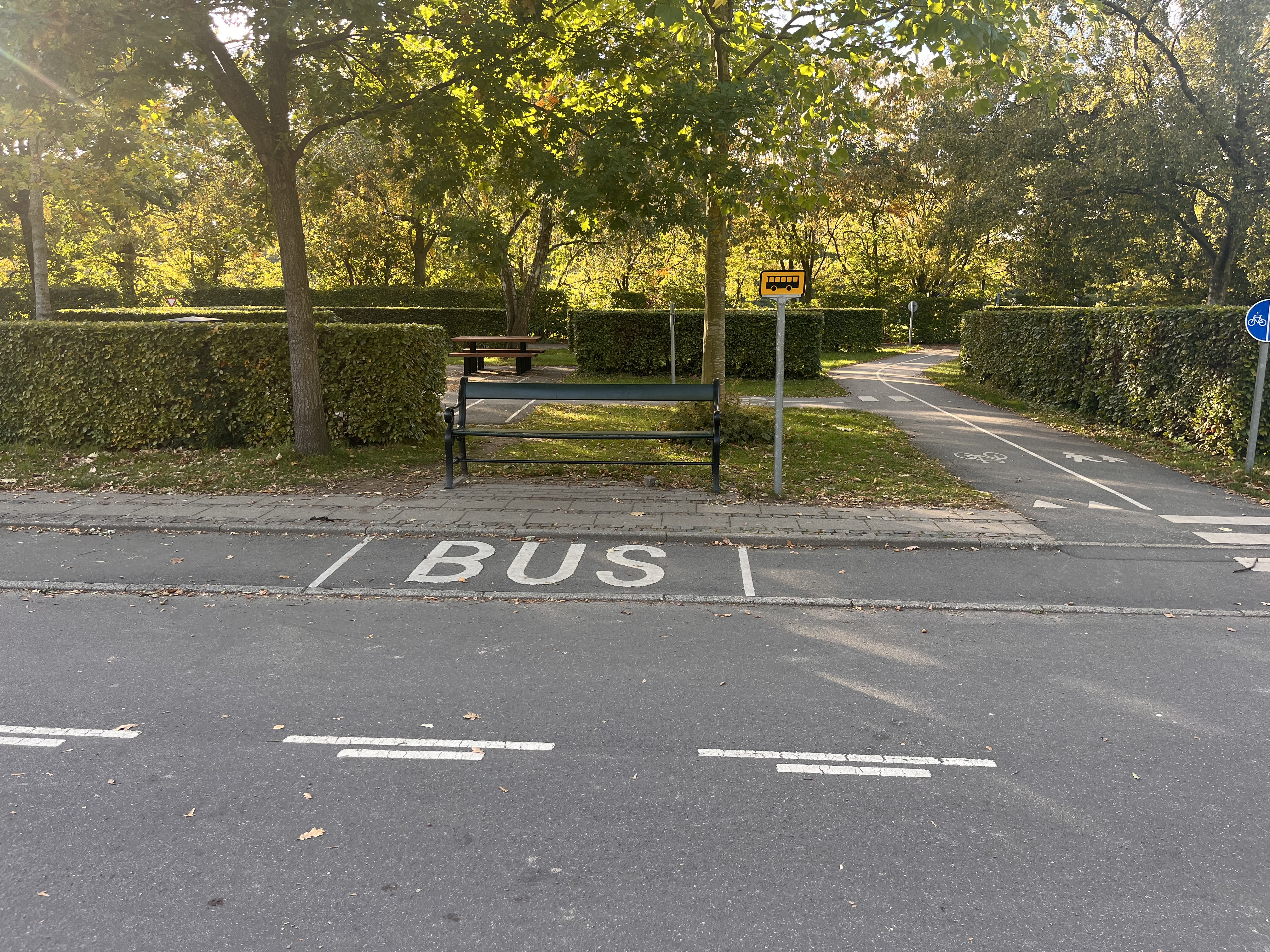

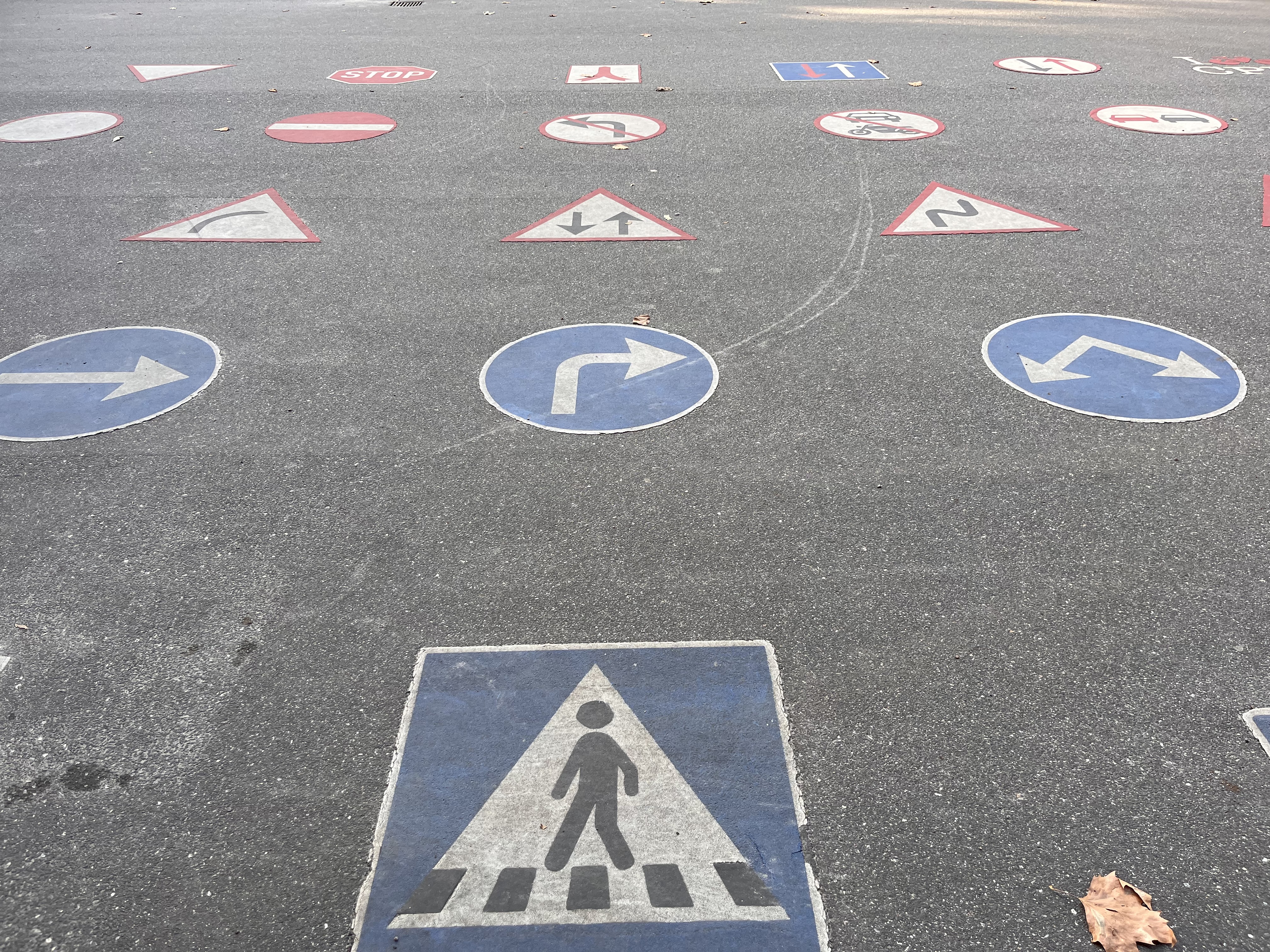
In the same way the cardboard scanner in our Playkit is an obvious representation of the MRI equipment the user is expected to come into contact with. Yet, our research with children under 10-years, especially those under 6-years, showed that children liked their play and corresponding storytelling to move between fiction and non-fiction themes. I thought about this in relation to the play equipment at the Tower Park, which was based on the roof top designs of Copenhagen buildings.
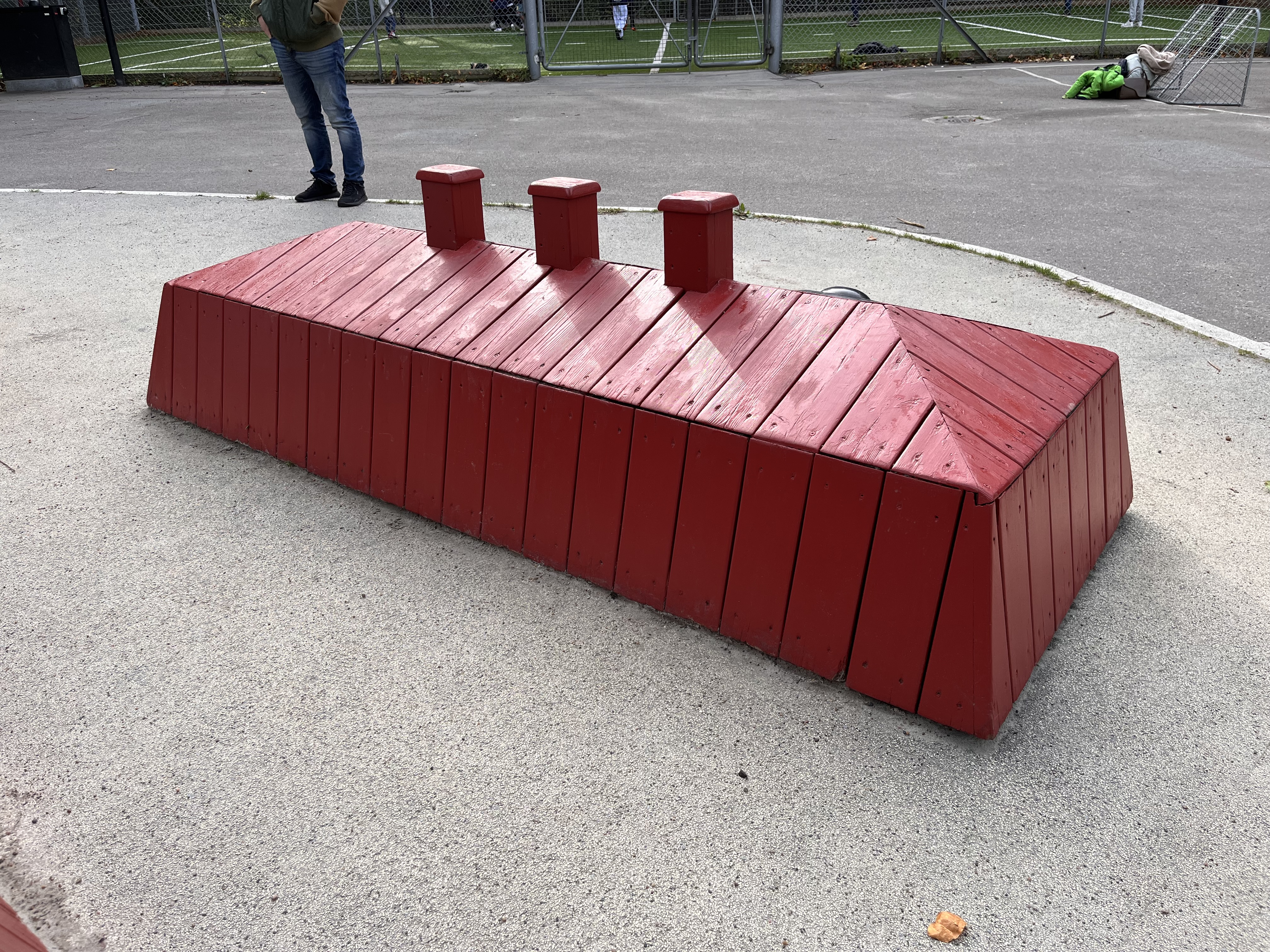

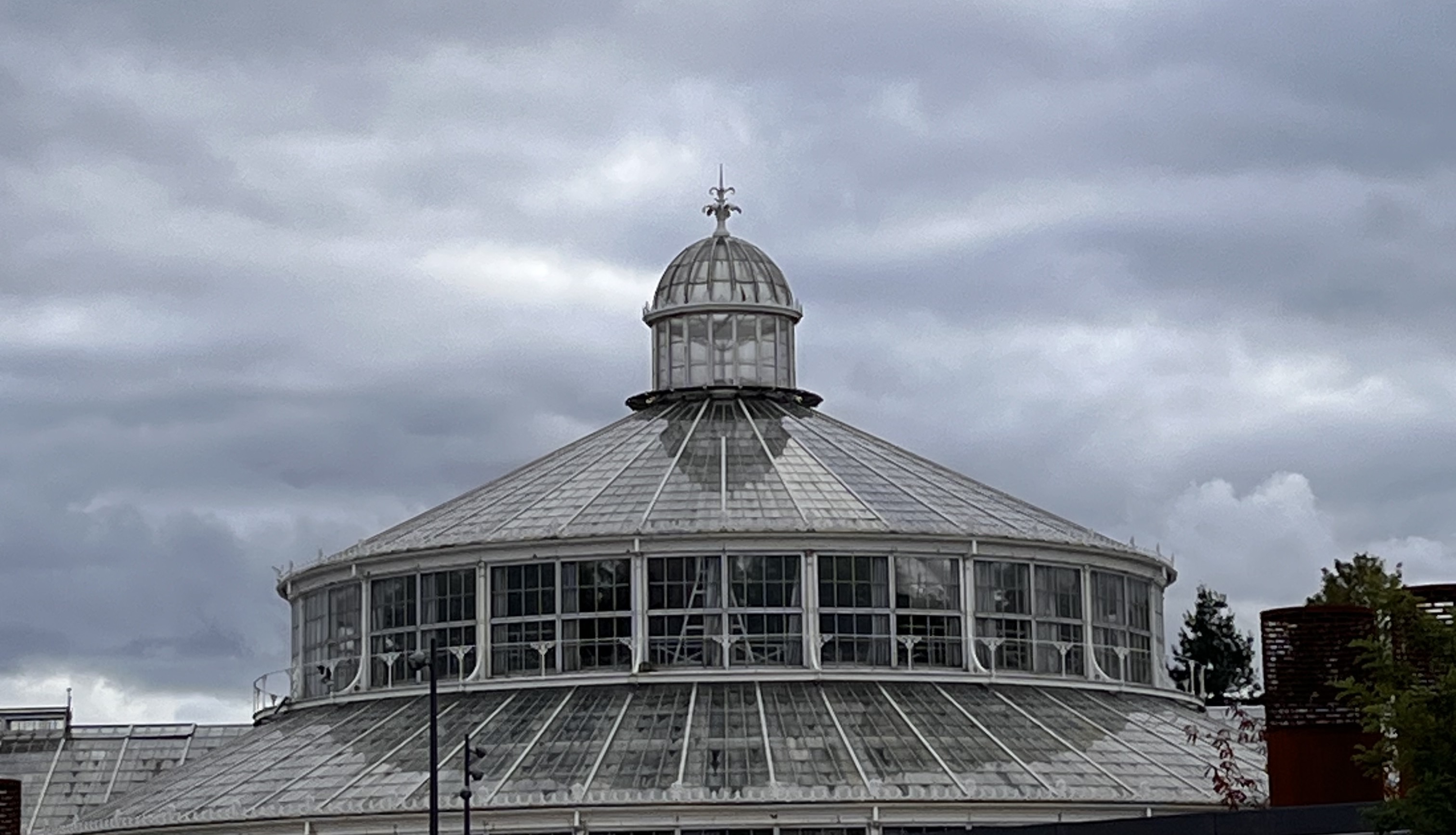
The rooftops provided the opportunity for children to play with familiar objects in a new way. The same principle could be seen in the way in which the design team at Mary Elizabeth’s were experimenting with how to allow children to become familiar with hospital equipment by allowing children to play with them and this alter their perspective of them.
For example, test tubes for blood were used on a peg board for play.
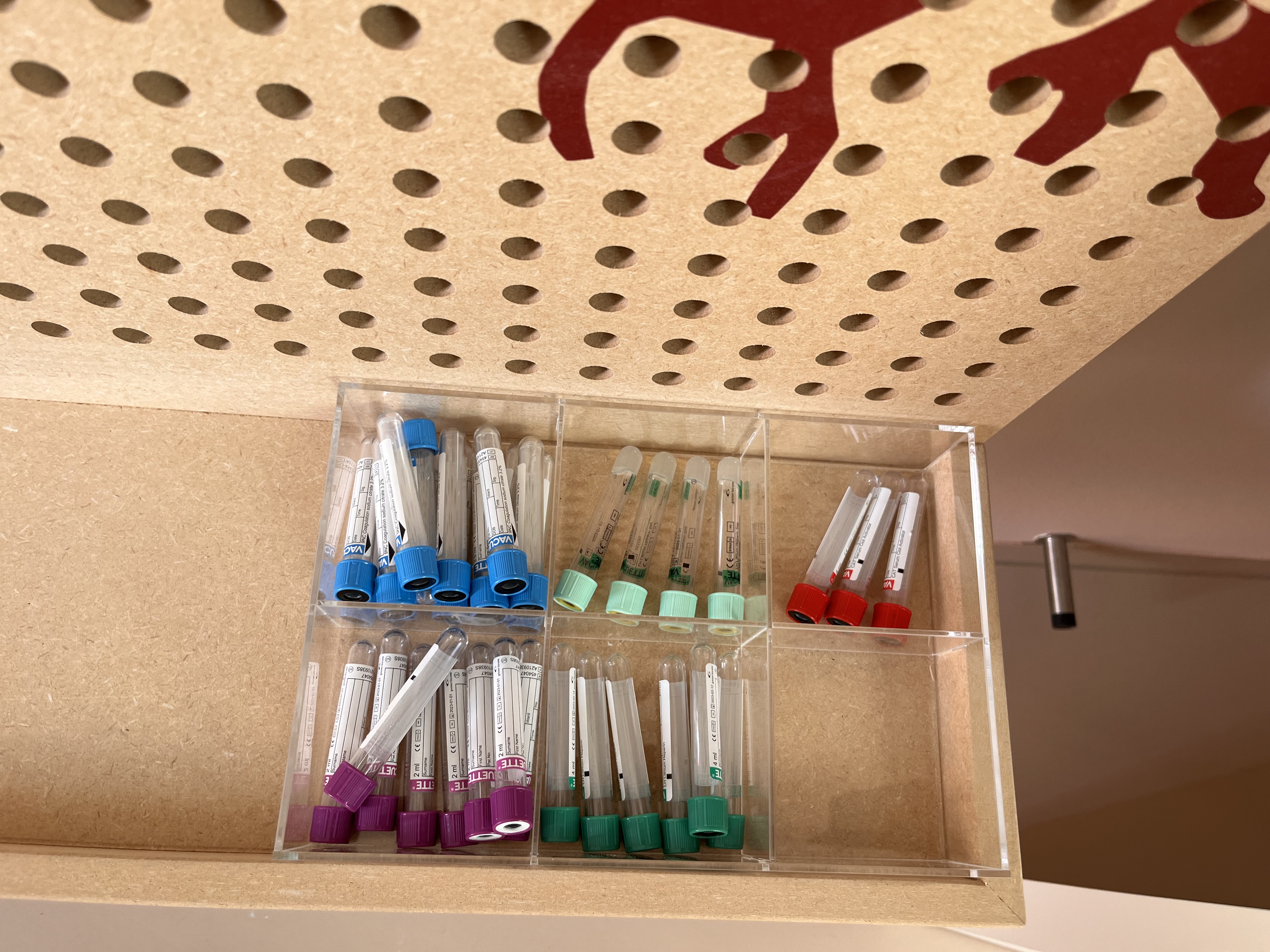
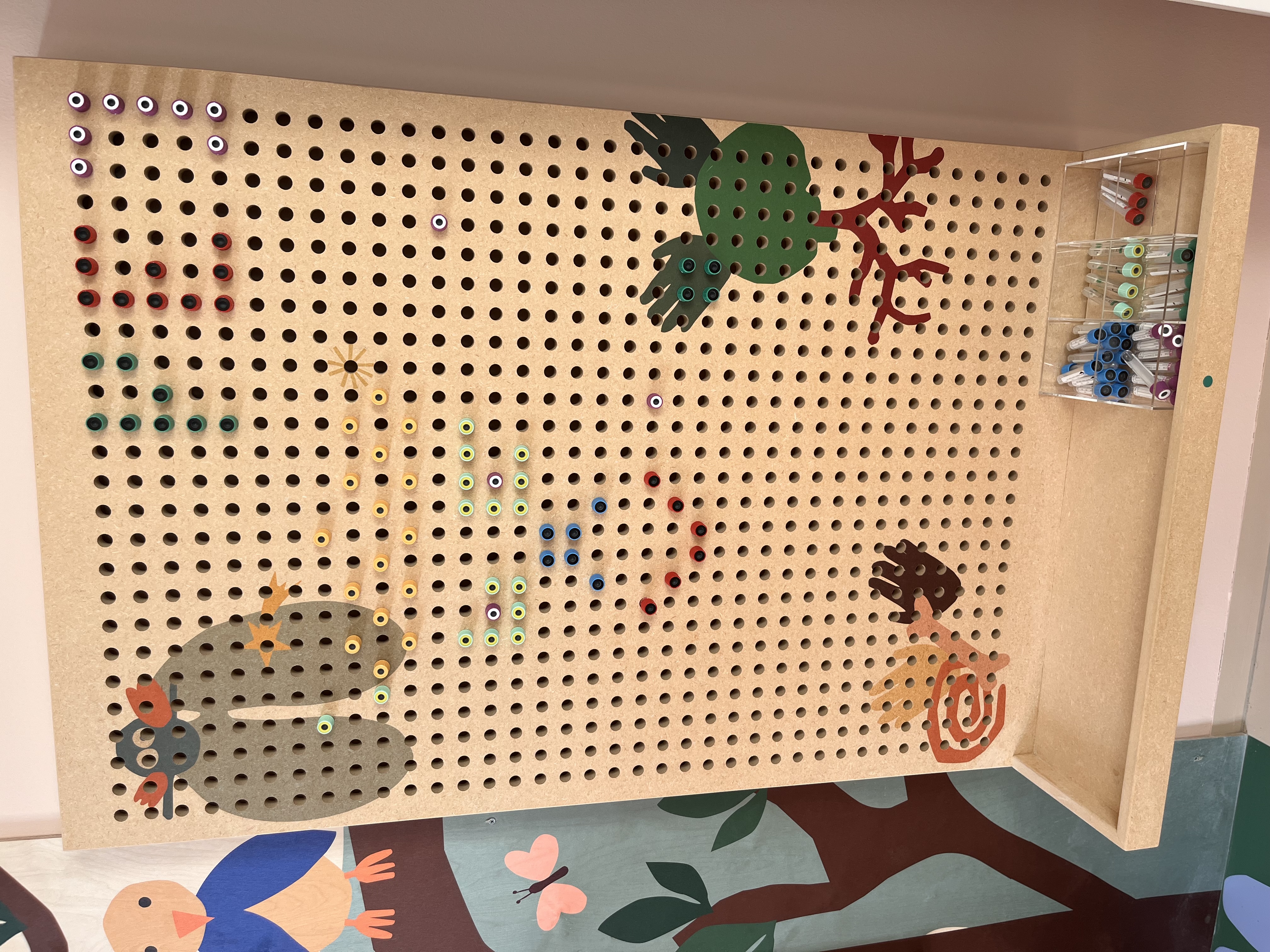
Later, when I was talking to Casper Reitz Mathisen about the Tower playground he made a comment about how he thought the design of the roof-tops play equipment was probably more for the adults than the children who simply enjoyed climbing on it. This comment reminded me about how play often has to serve both adults and children at the same time, especially when children are very young. It is an aspect that our Playkit has tried to address directly by making it slightly too difficult for a child to build along and thus, in needing adult help their parent or guardian could also be on-boarded to the MRI process too, something we were told by hospital specialists was needed. Yet, in thinking about the roof-tops I wondered if we could have done something more subtle to encourage a playful interest in both children and adults.
Personalisation
In our MRI Playkit research we found overwhelmingly that children wanted the chance to make it their own. In the co-creation sessions for the product development, children added coloured tapes, drawings and pipe cleaners to the cardboard MRI scanner. Then in the user testing children enjoyed combining the playkit with other toys such as building a LEGO hospital around the scanner. In the Copenhagen hospital test house the team showed us how they had also been exploring personalisation, for example the images below show experiments to allow children to decorate their duvet covers, or clip felt shapes to it to make it feel more like their own personal space.
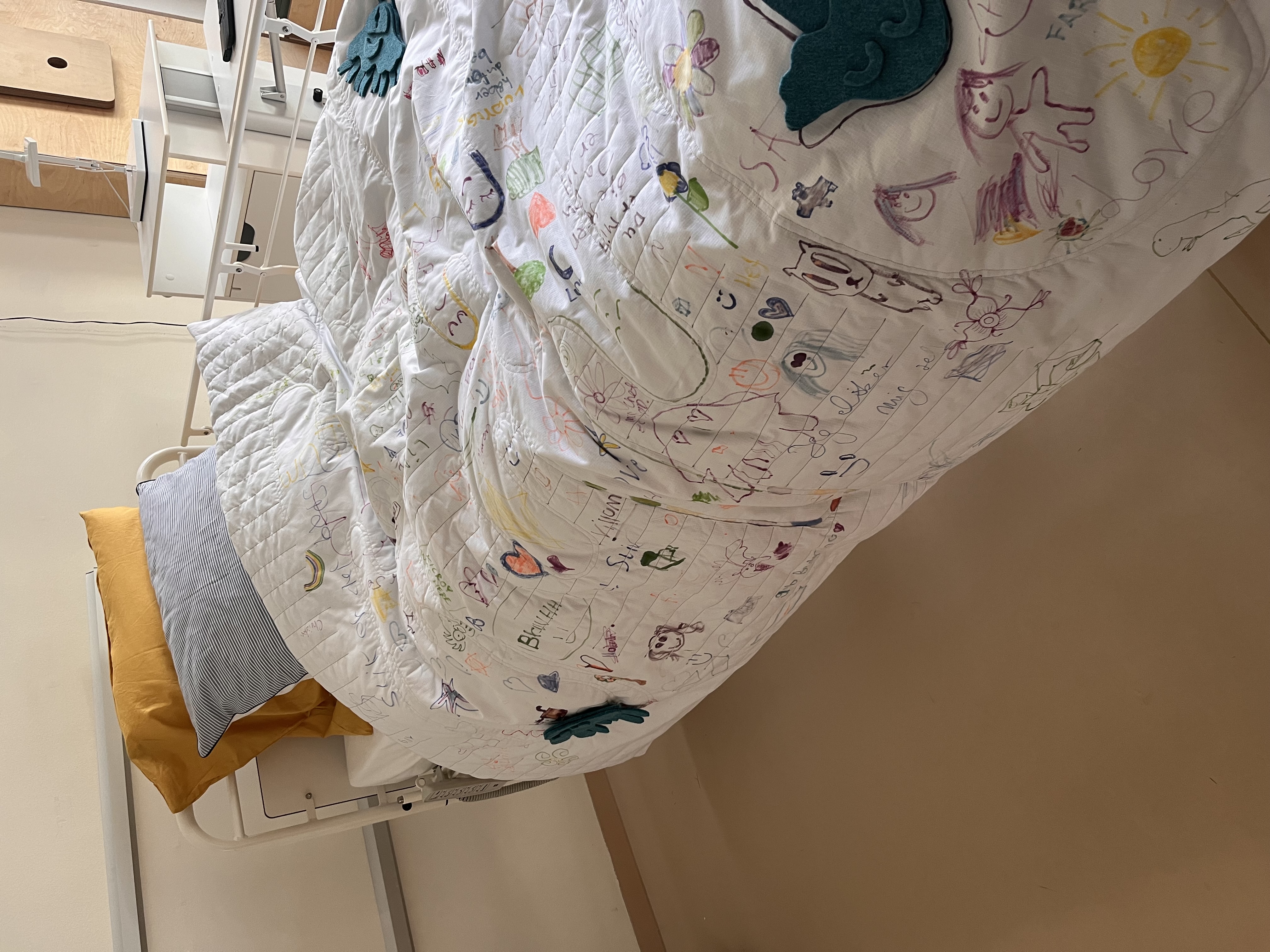

Play for Distraction from Hospital Procedures
It has been well documented that positive distraction can be useful to patients going through medical care. At Dubit where the original MRI Playkit work was undertaken research had been undertaken around the use of Virtual Reality to act as a positive distraction while some medical procedures are undertaken. In the current Copenhagen Hospital space we were shown a maker space that could be used by all patients:
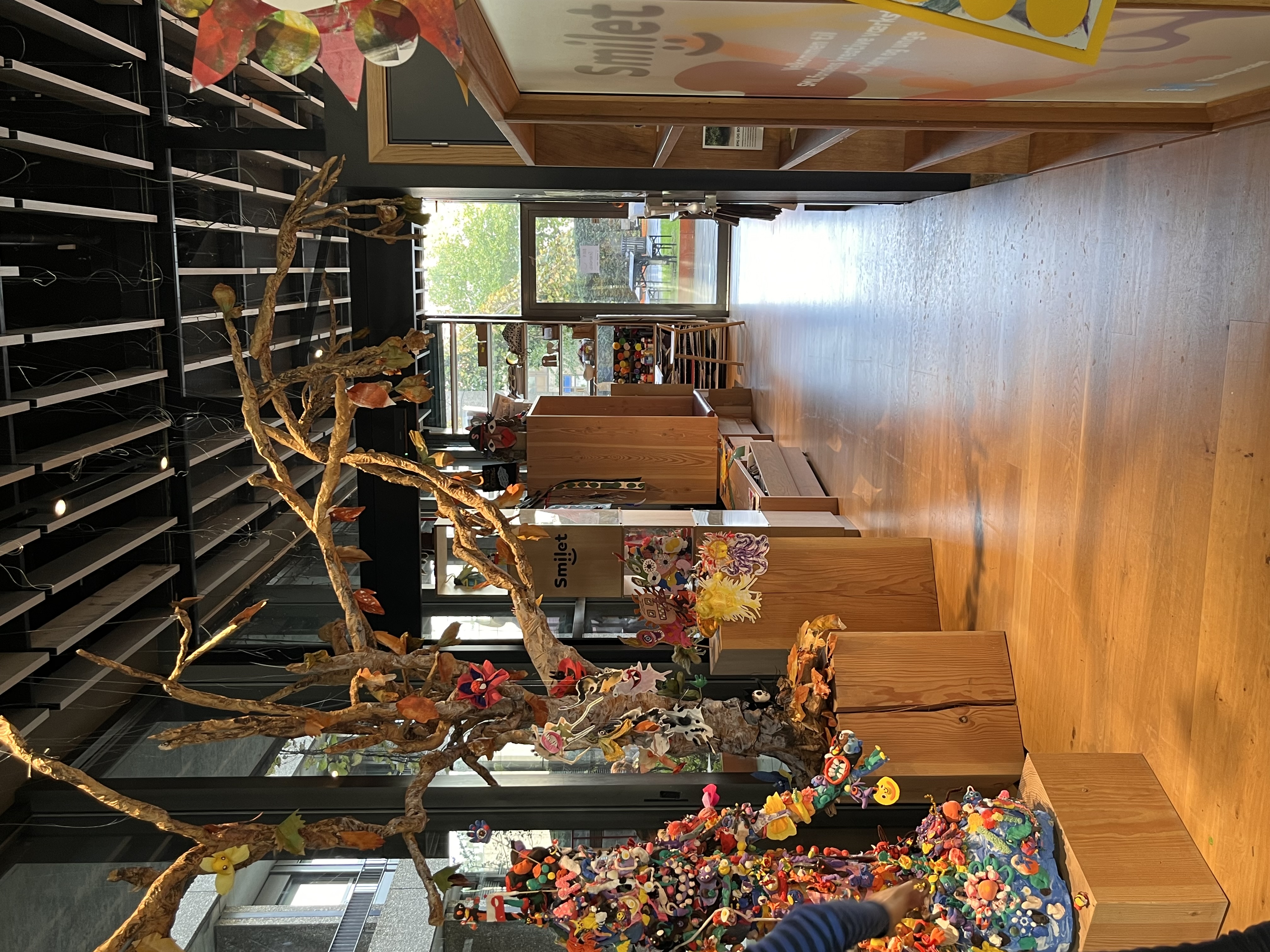
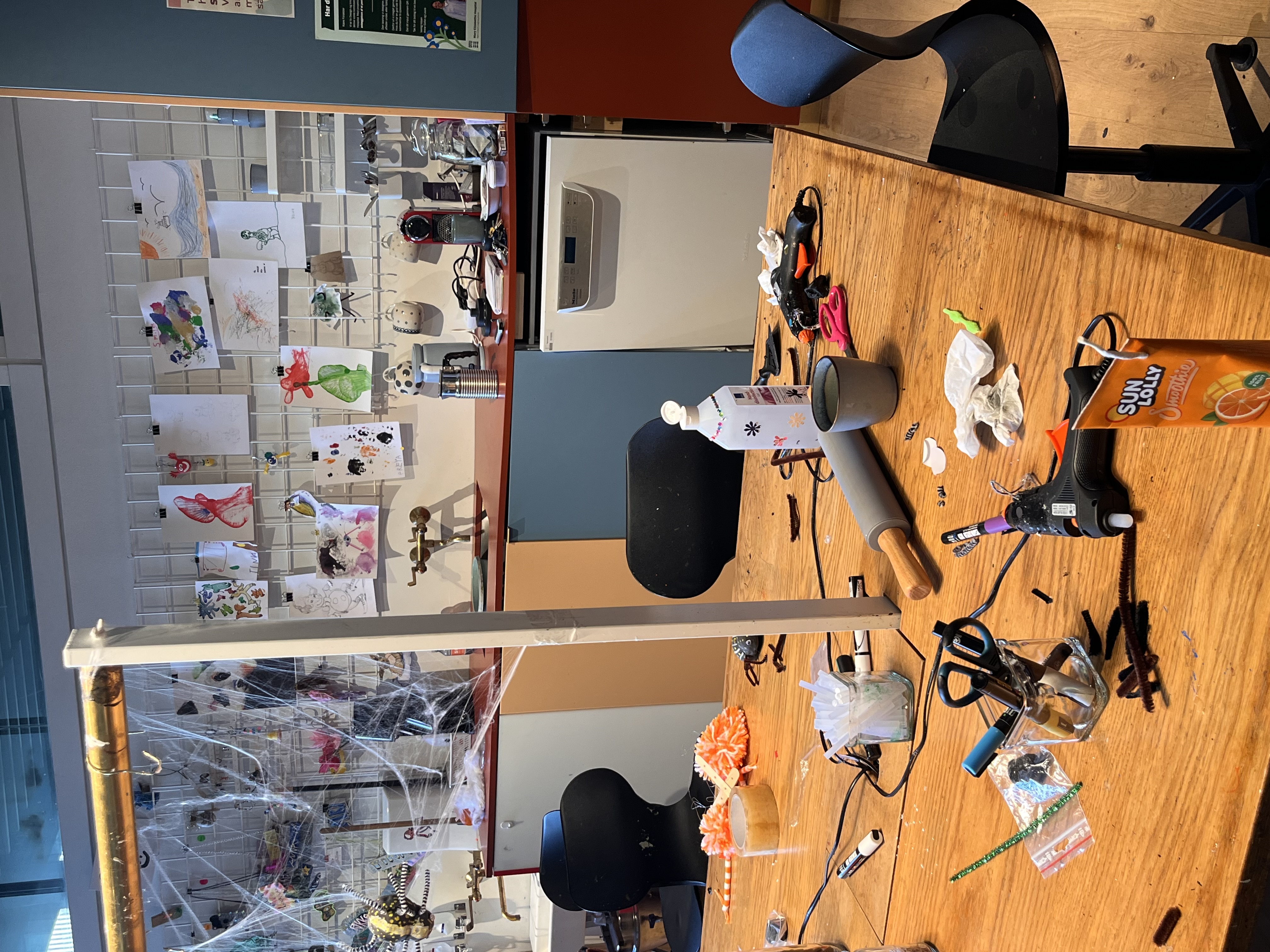
The staff in the makerspace told us about how they also take a cart of making materials around the wards for children unable to reach them. They recounted an anecdote about how a child had hurt herself falling from her bed before they arrived and although not serious was inconsolable. The nurse had gone to get pain medication but by the time she had returned the patient was so engrossed in an art project she no longer needed it. I have not heard of any makerspaces in UK hospitals but I recently became aware of a project to bring cinema to them: Medicinema.
My final thoughts from the knowledge exchange trip are in relation to communication of medical information and modality.
Communication of Medical Information & Modality
As part of the knowledge exchange, I attended the Copenhagen central city library to have a look at Danish books for children about health. I could not read the books so I studied the images. It seemed that there was a loose separation between books for older children using photos (high modality) and books for younger children that were illustrated (low modality. In social semiotic theory such as that by Kress and Van Leeuwen (2005) high and low modality are used as terms related to specific media and their ability to represent reality. Thus, photography is seen as the highest modality for the closeness with which it can visually replicate reality. Yet, my research with children has repeatedly suggested that this distinction does not resonate with younger audiences who often move much more frequently between fictional worlds and factual learning, using one to make sense of the other and visa versa or who find it easier to see themselves in low modality images than in photographs of other children who by their very nature are definitely not them.
The findings from the initial research with foundation stage and primary school children during the development of our MRI playkit found that children’s interest in high and low modality imagery specifically for communicating medical information was mixed. For example, they were interested in fictional stories like having an extra tunnel for a giraffe to be scanned, but all children even the youngest at 4-years-old wanted to see actual scan images rather than illustrations of them. I was reminded of this when looking at the books in the library, that perhaps it is a mistake for there to be such a clear division between modality type and intended age of the audience, specifically with medical and health narratives.
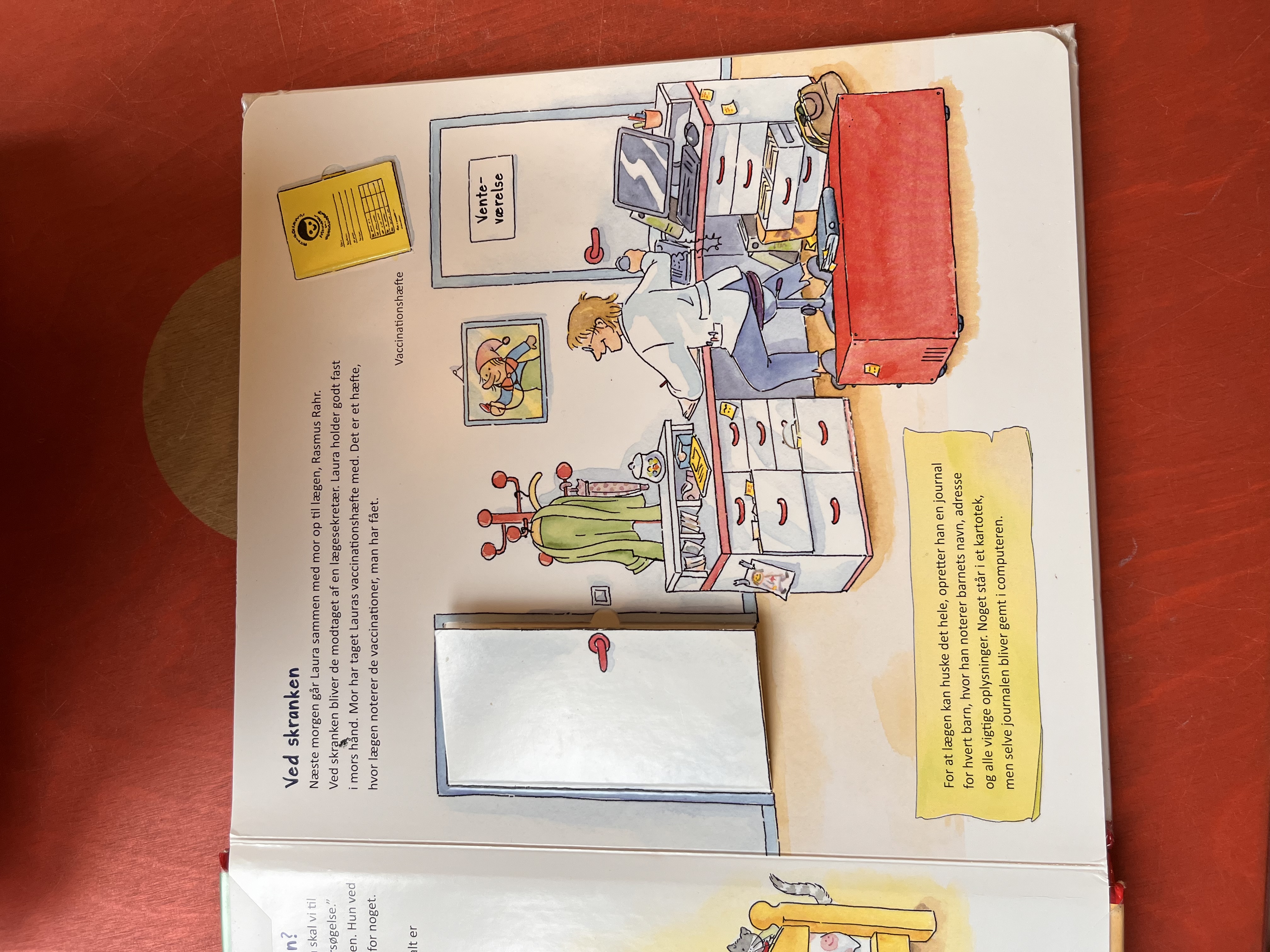
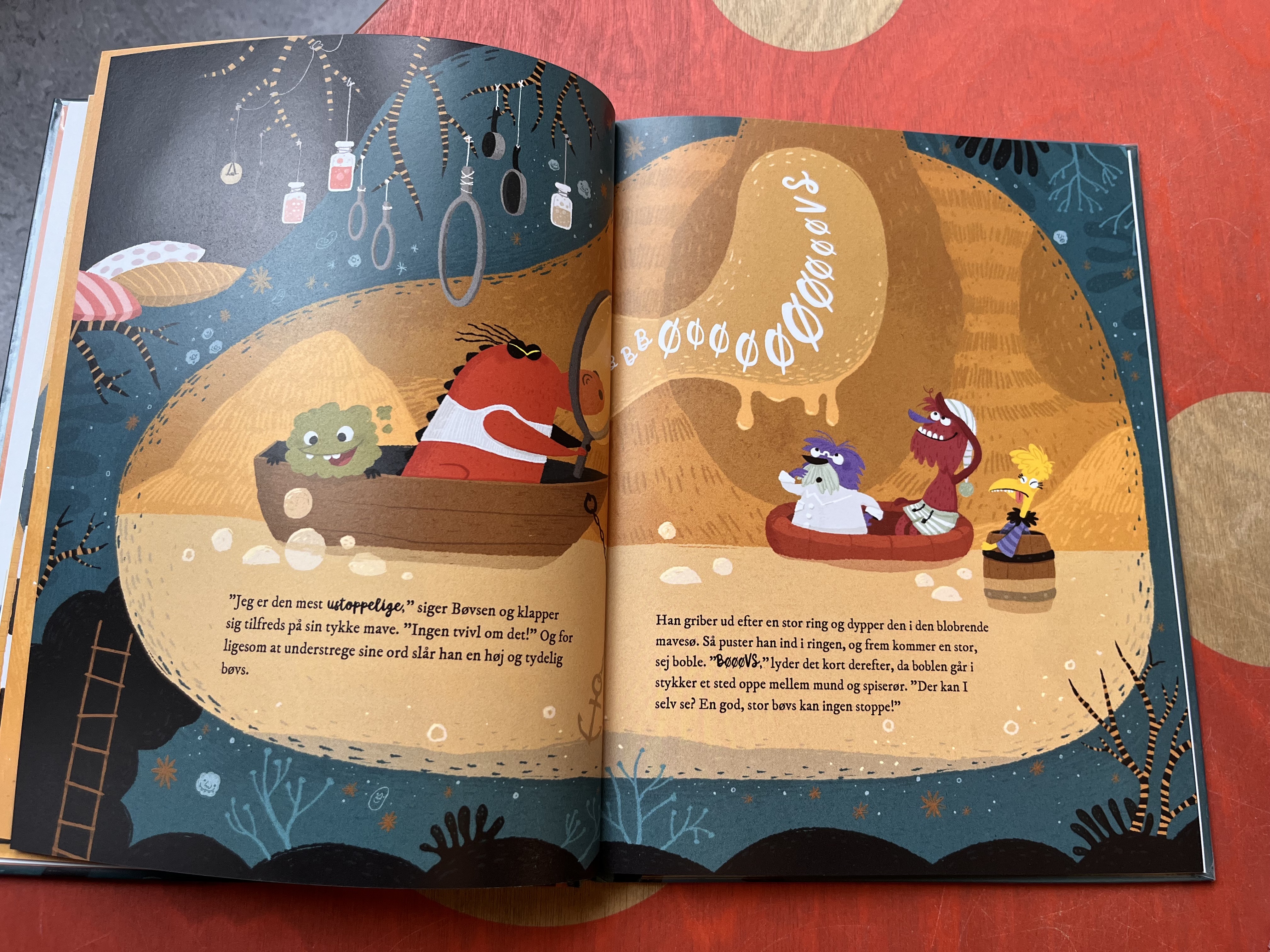
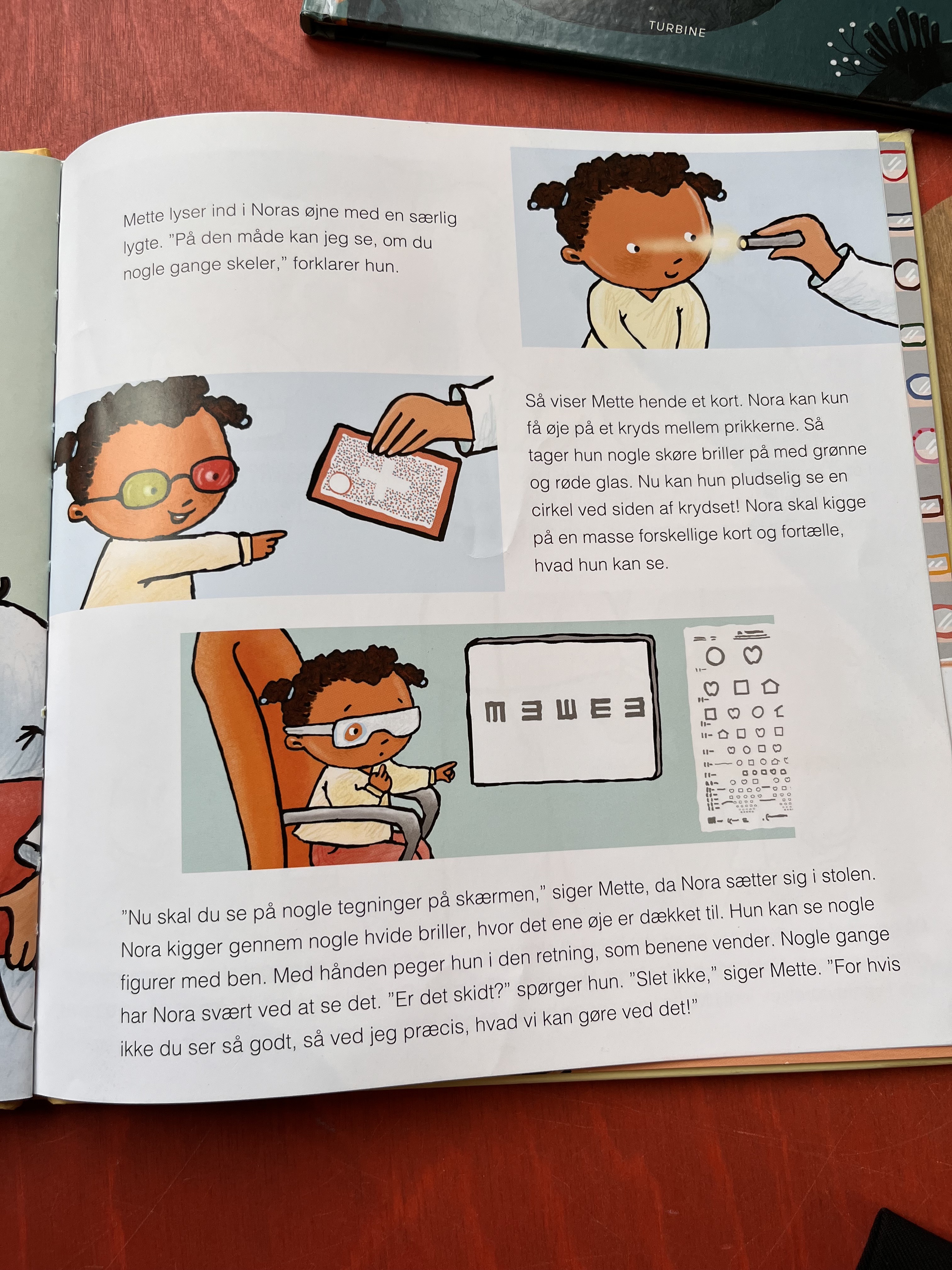
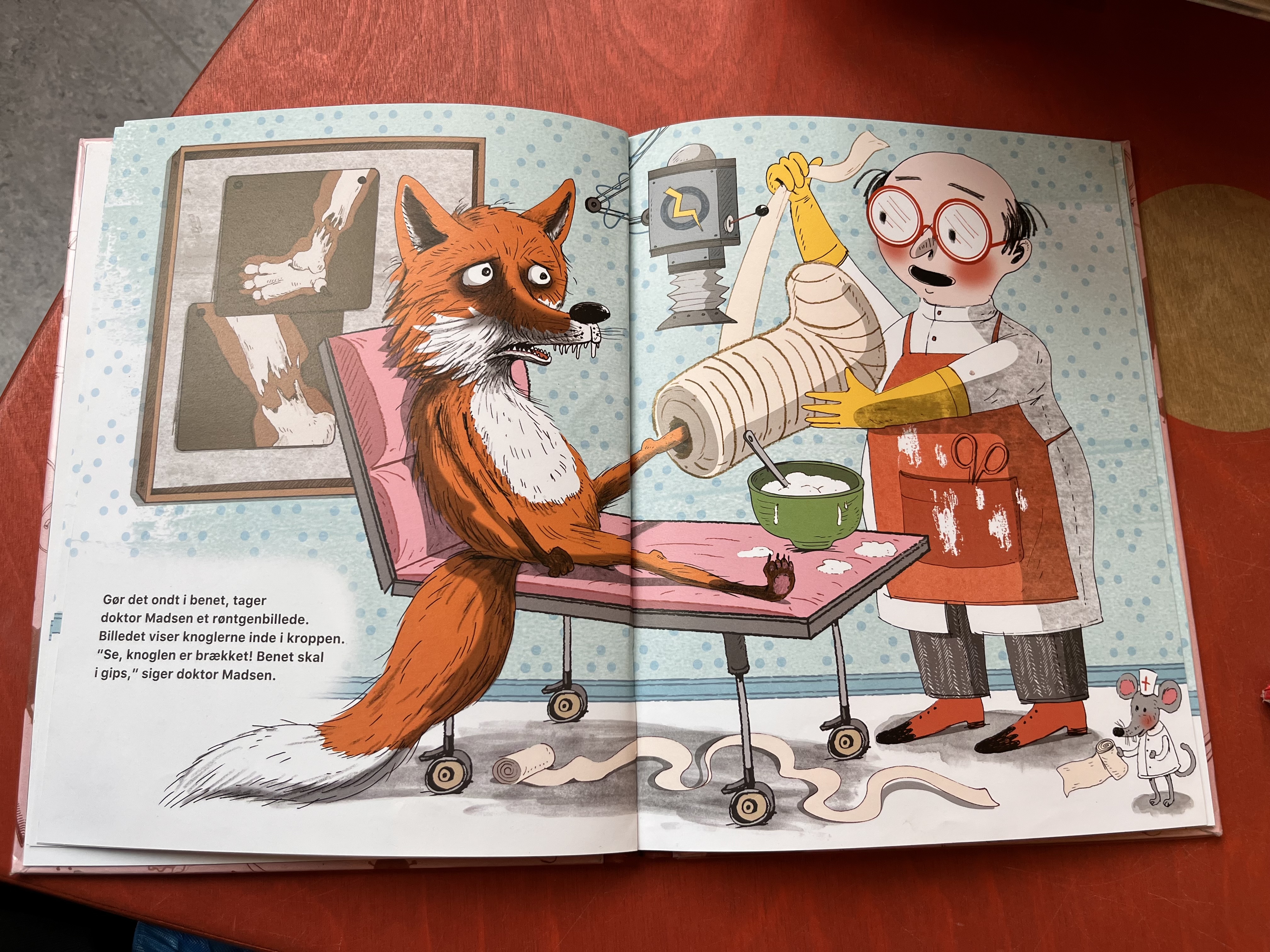
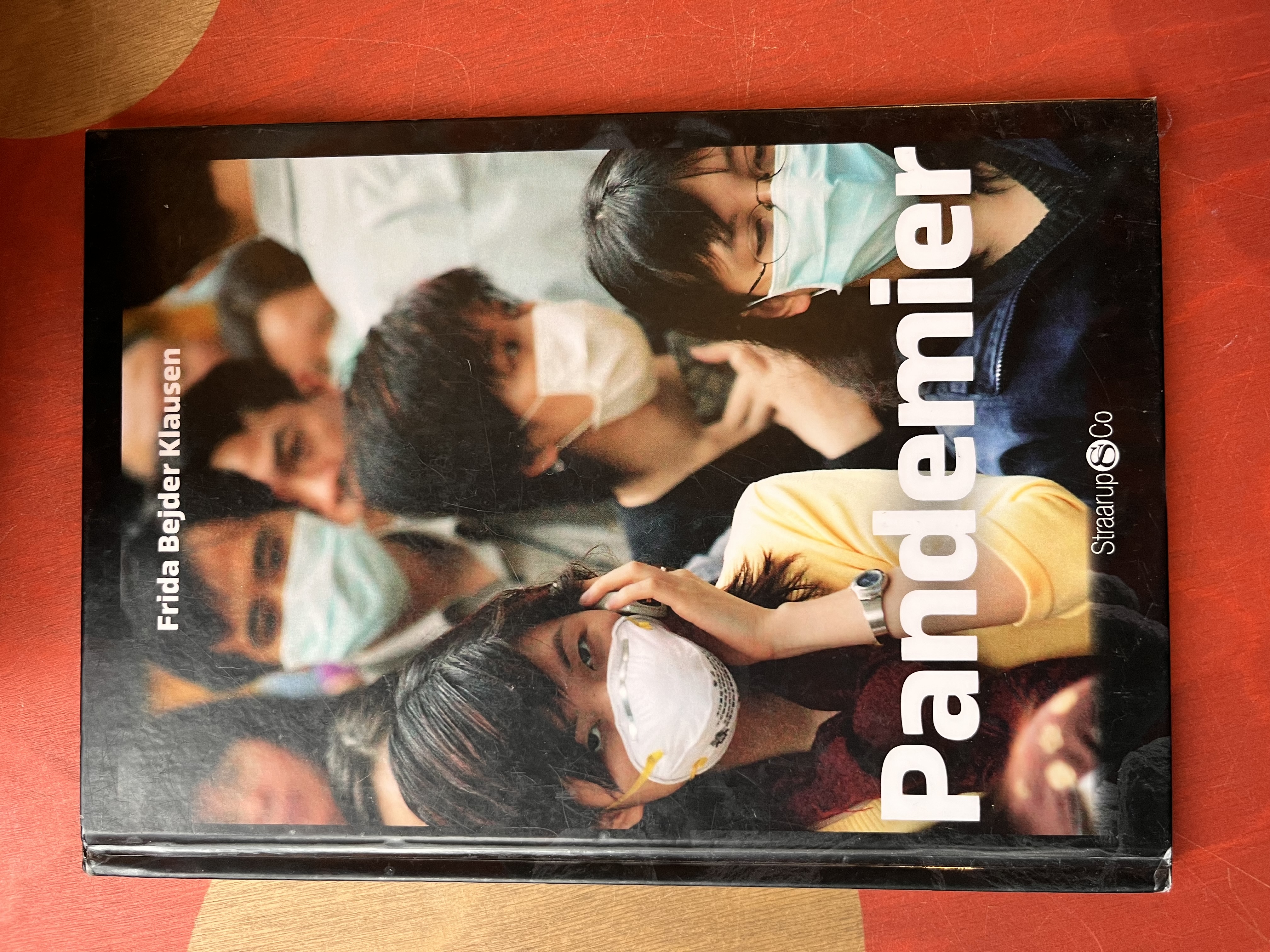

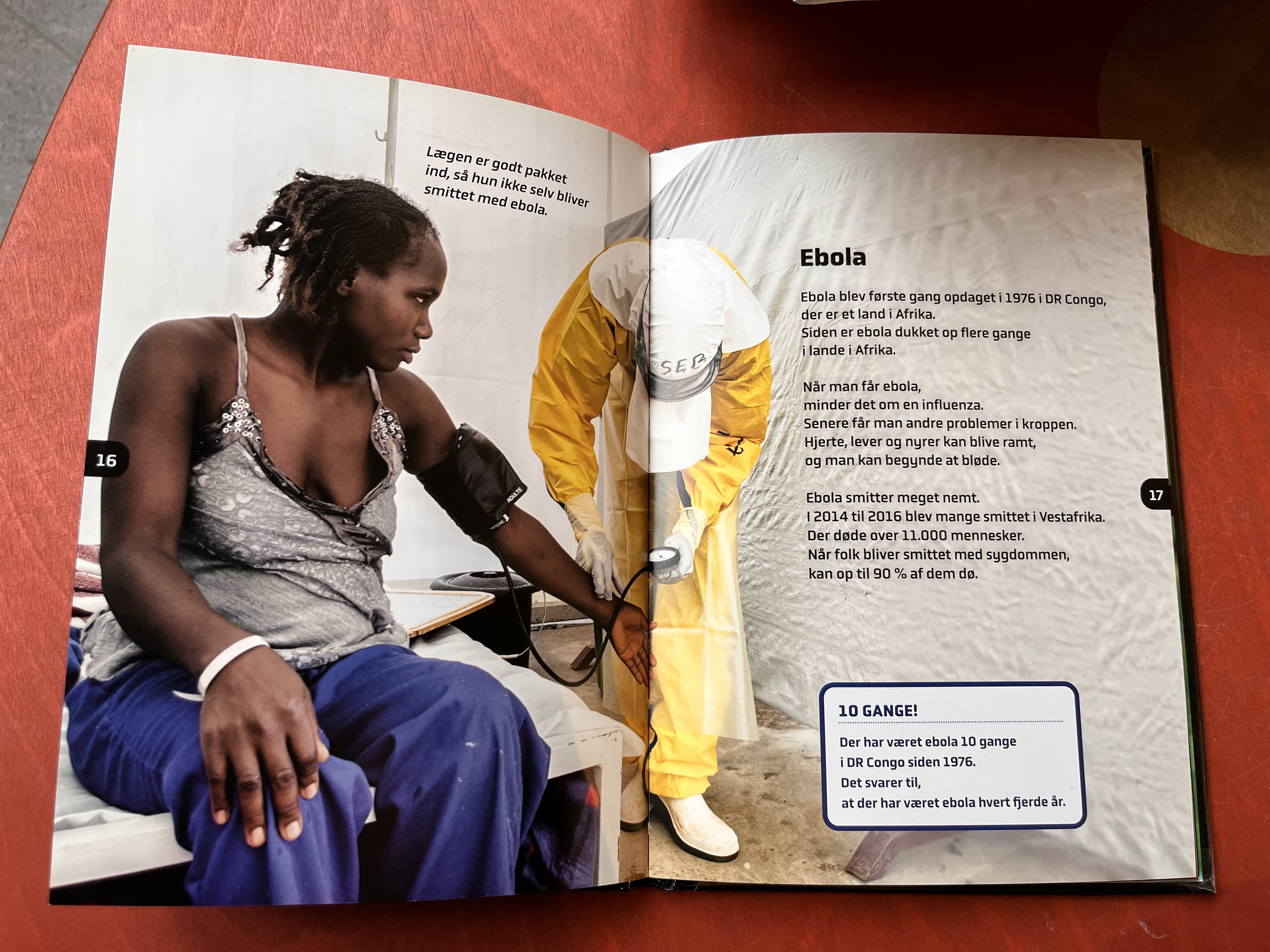
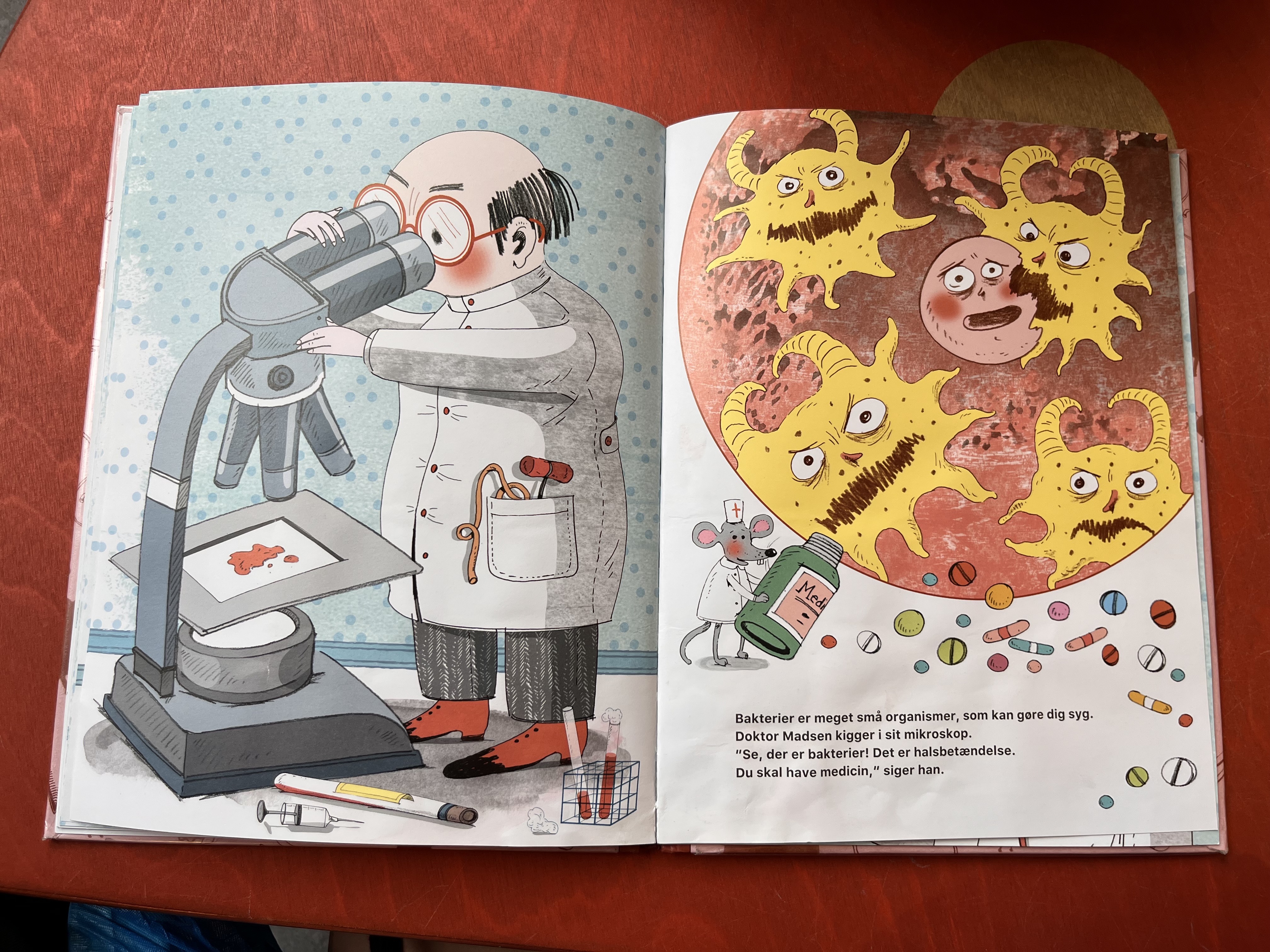
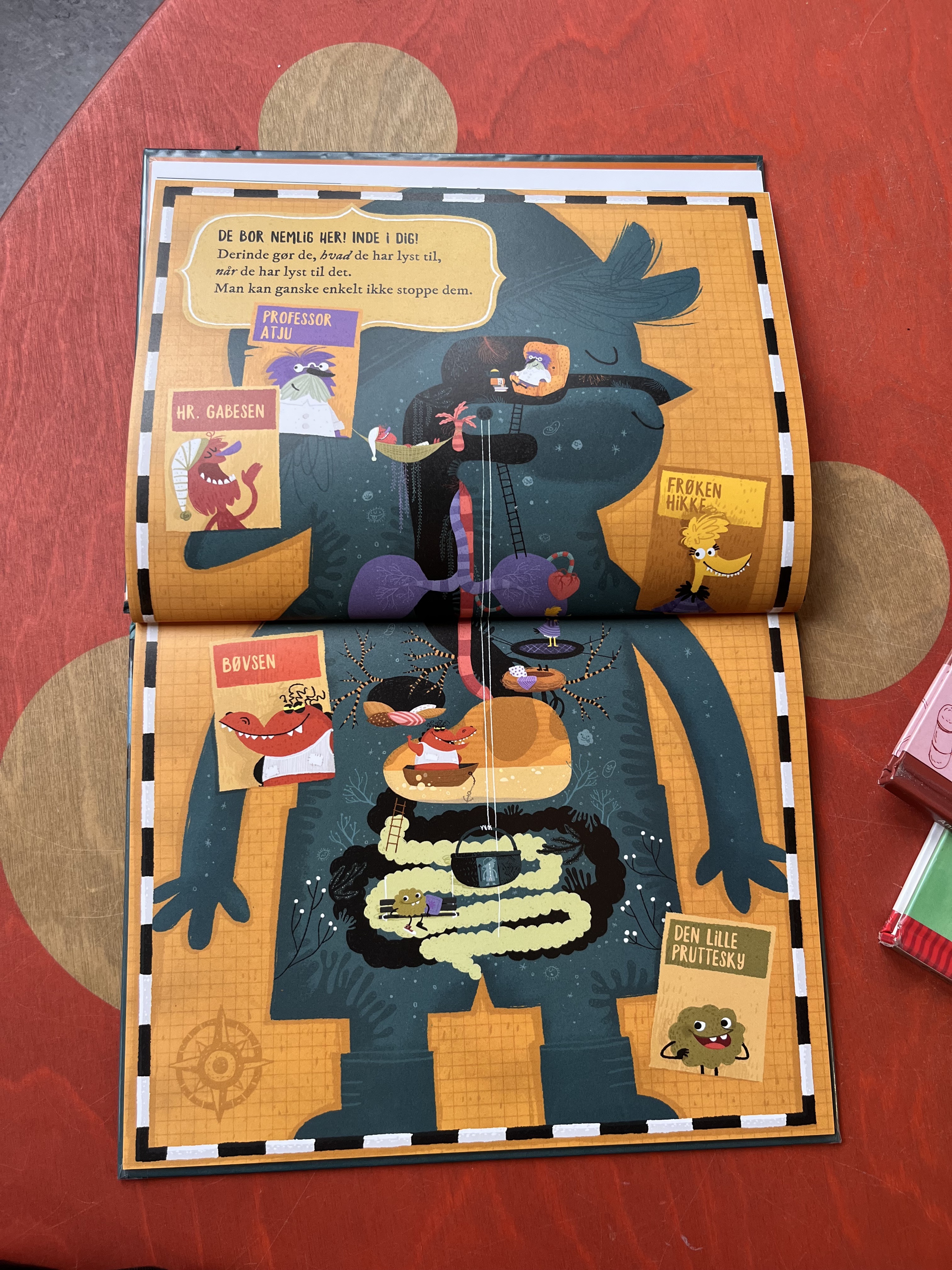
Images: Examples of Danish Books about Health and Medicine for Children
Nikki also wrote a blog about here insights from the knowledge exchange trip which can be read here.
Photo Gallery
